Scientific Name
Dudleya verityi K.M.Nakai
Family
Crassulaceae
General
Grows in sometimes dense colonies, each individual a small rosette of dark green leaves. Found growing on rock surfaces, on north-facing slopes. This species is listed under the United Stated Endangered Species Act (ESA) as category "threatened."
This species regularly hybridizes with Dudleya lanceolata where to two co-occur.
CI
Large populations of this species are thriving on several rock faces around CI, always on north facing slopes. The plants grow from fissures in the rocks, sometimes from pads of moss or masses of Selaginella. Hybrids between this species and Dudleya lanceolata are known from CI habitats and from the roofs of some campus buildings.
They produce stalks of small yellow flowers. In early Summer, from a distance, some cliff faces appear dull yellow, such is the density of these plants on their preferred habitat.
This is another very special member of CSUCI’s natural history, one worthy of preservation and study.
The Springs fire of May 2013 burnt through the entire range of this endangered species. On some CI sites, scattered plants survived the initial fire, and the populations appear to be recovery. There was initially serious concern among conservation officials for this species.
A note of the photographs below: As mentioned above, D. verityi hybridizes with D. lanceolata, with patches of putative hybrid plants common and widely dispersed on campus habitats. To illustrate D. verityi here-in, I selected photographs only from populations that have been verified by botanists with experience with D. verityi. This includes three sites on the hill along the south edge of campus and one in University (Camarillo) Park. Other possible or probable patches of hybrid plants are known from the hill along the south edge of campus, Round Mountain and the hill to the north east of Sage Hall, CI campus. I've included here many more photographs than for any other CI species. I wanted to demonstrate the disturbance caused by the Springs Fire of May 2013, and the recovery.
References
More on this species at CalFlora.
The Jepson Manual (2012: 689, Dudleya by Stephen Ward McCabe).
McAuley (1996: 322).
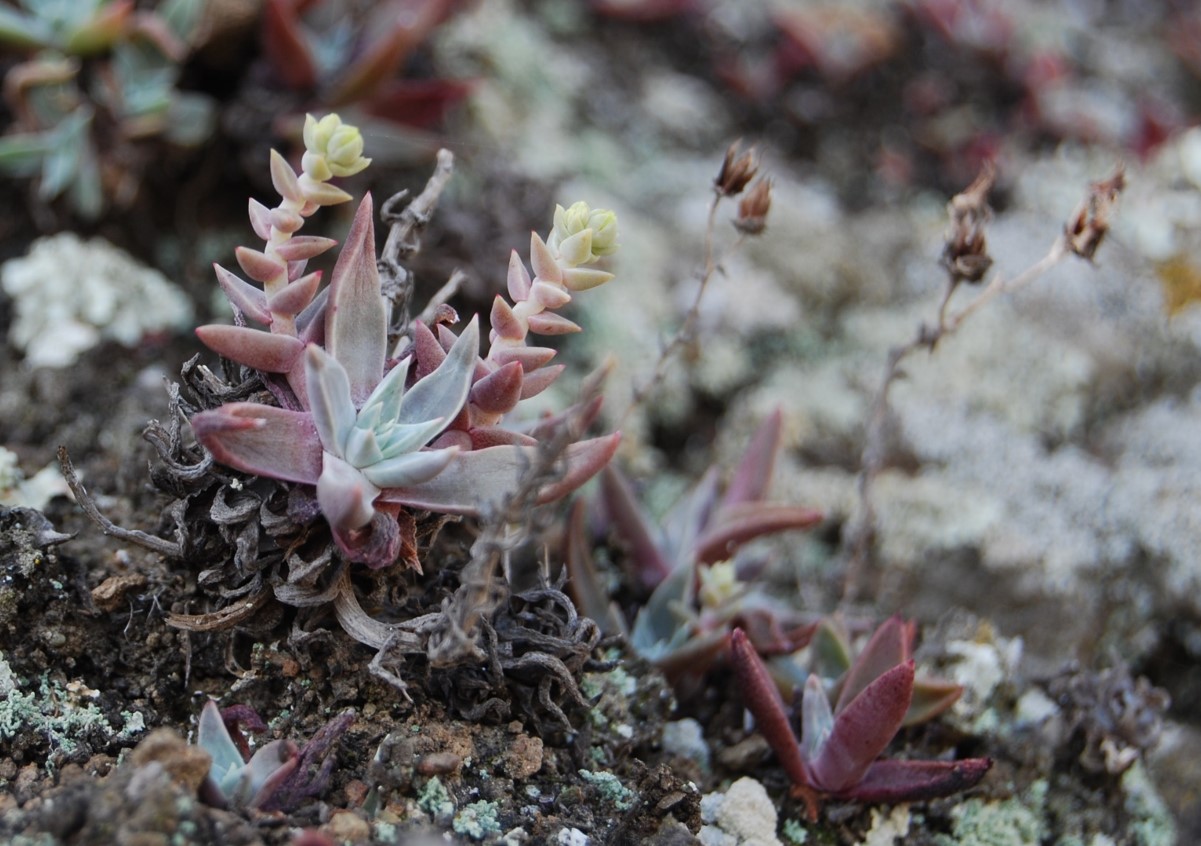 Dudleya verityi on the north slope of the hill to south of the CI campus, above Malibu Hall. Plants are close to flowering just two weeks before the Springs Fire. Note also dried flowers from previous season (22 April 2013).
Dudleya verityi on the north slope of the hill to south of the CI campus, above Malibu Hall. Plants are close to flowering just two weeks before the Springs Fire. Note also dried flowers from previous season (22 April 2013).
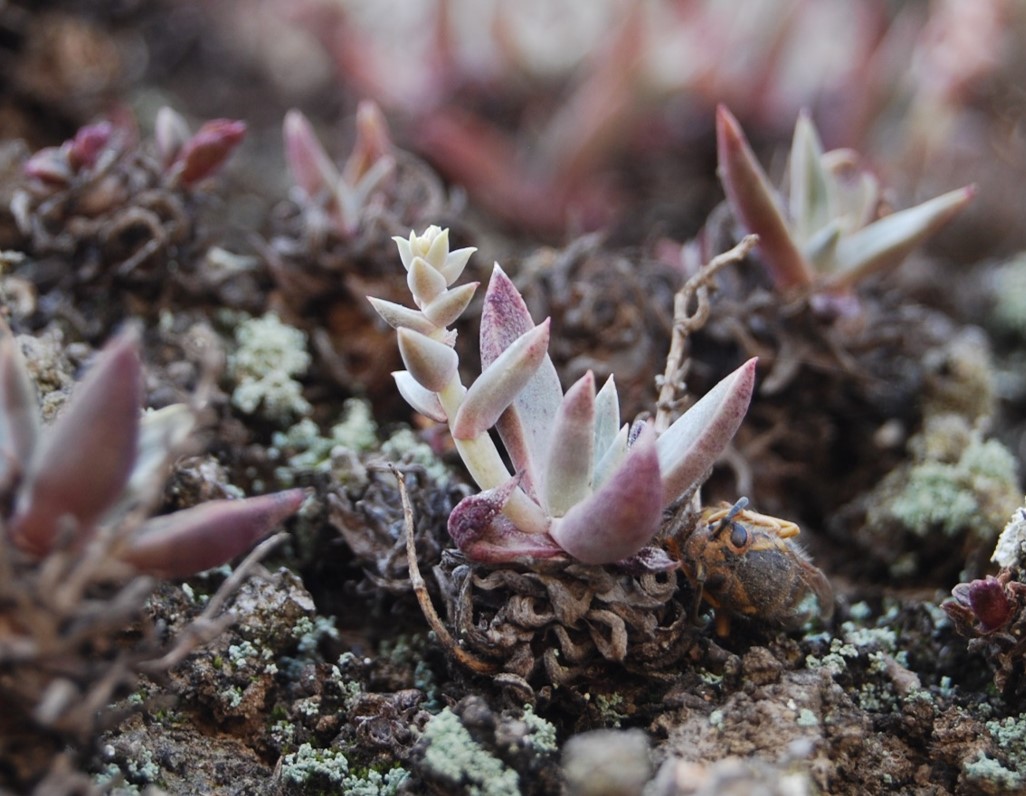 Dudleya verityi on the north slope of the hill to south of the CI campus, above Malibu Hall. Plants are close to flowering just two weeks before the Springs Fire (22 April 2013).
Dudleya verityi on the north slope of the hill to south of the CI campus, above Malibu Hall. Plants are close to flowering just two weeks before the Springs Fire (22 April 2013).
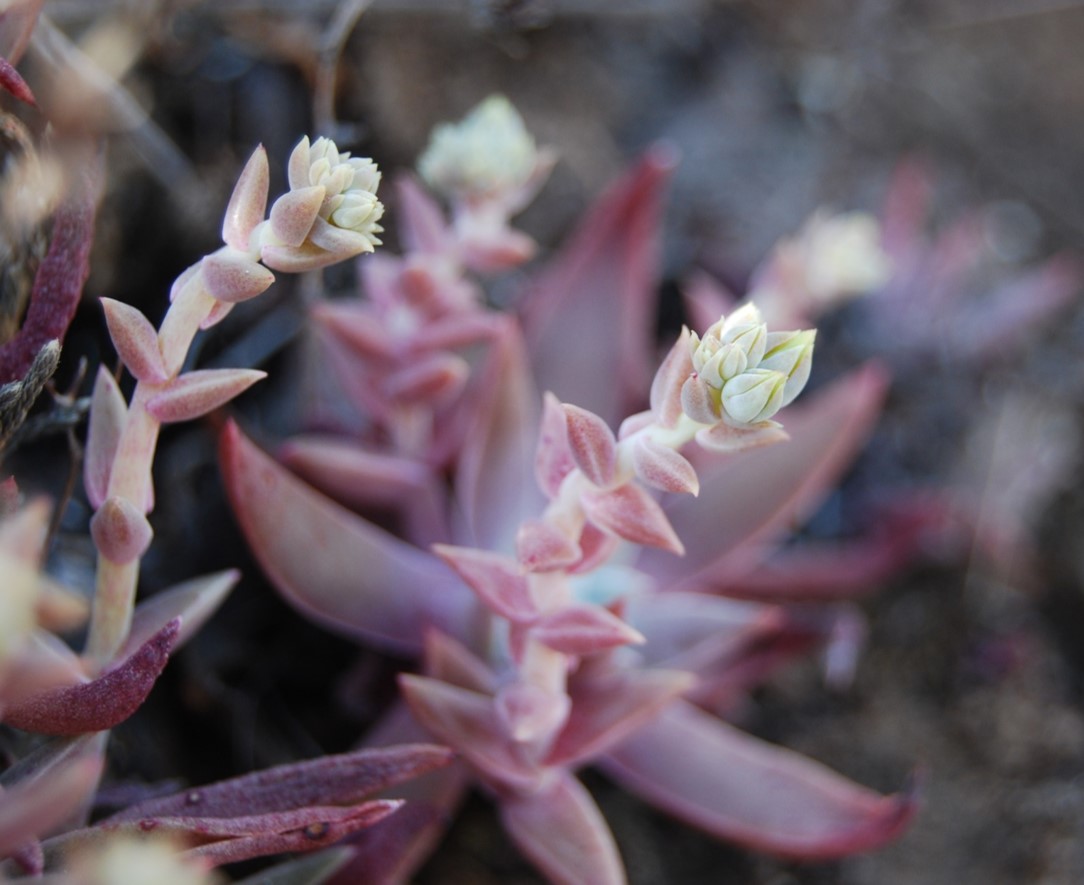 Dudleya verityi on the north slope of the hill to south of the CI campus, above Malibu Hall. Plants are close to flowering just two weeks before the Springs Fire (22 April 2013).
Dudleya verityi on the north slope of the hill to south of the CI campus, above Malibu Hall. Plants are close to flowering just two weeks before the Springs Fire (22 April 2013).
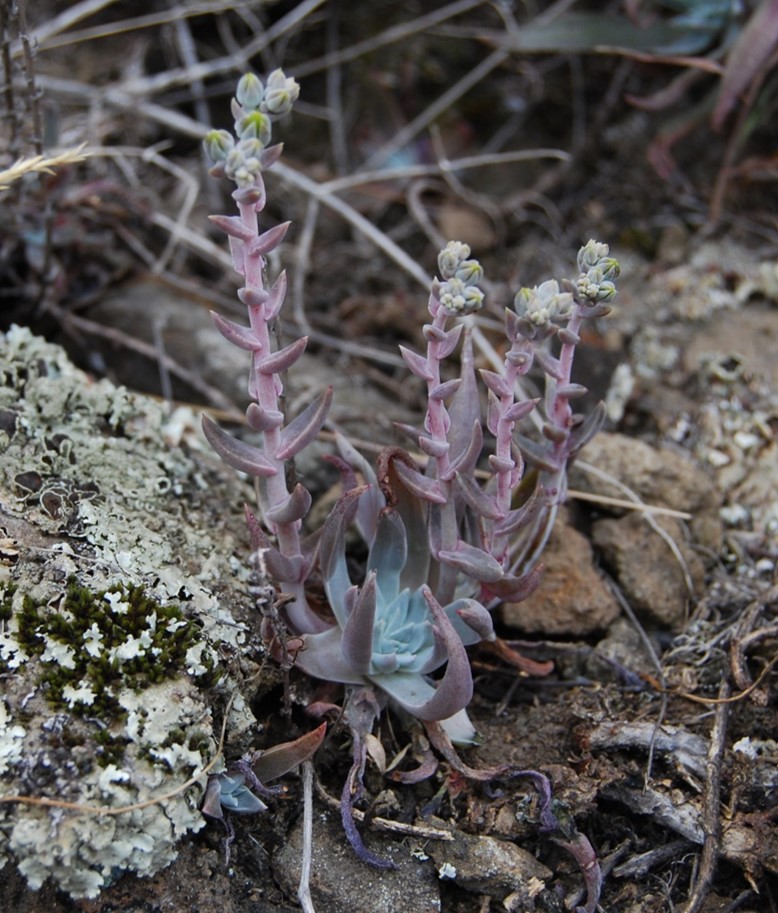 Dudleya verityi on the north slope of the hill to south of the CI campus, above Malibu Hall. Plants are close to flowering just two weeks before the Springs Fire (24 April 2013).
Dudleya verityi on the north slope of the hill to south of the CI campus, above Malibu Hall. Plants are close to flowering just two weeks before the Springs Fire (24 April 2013).
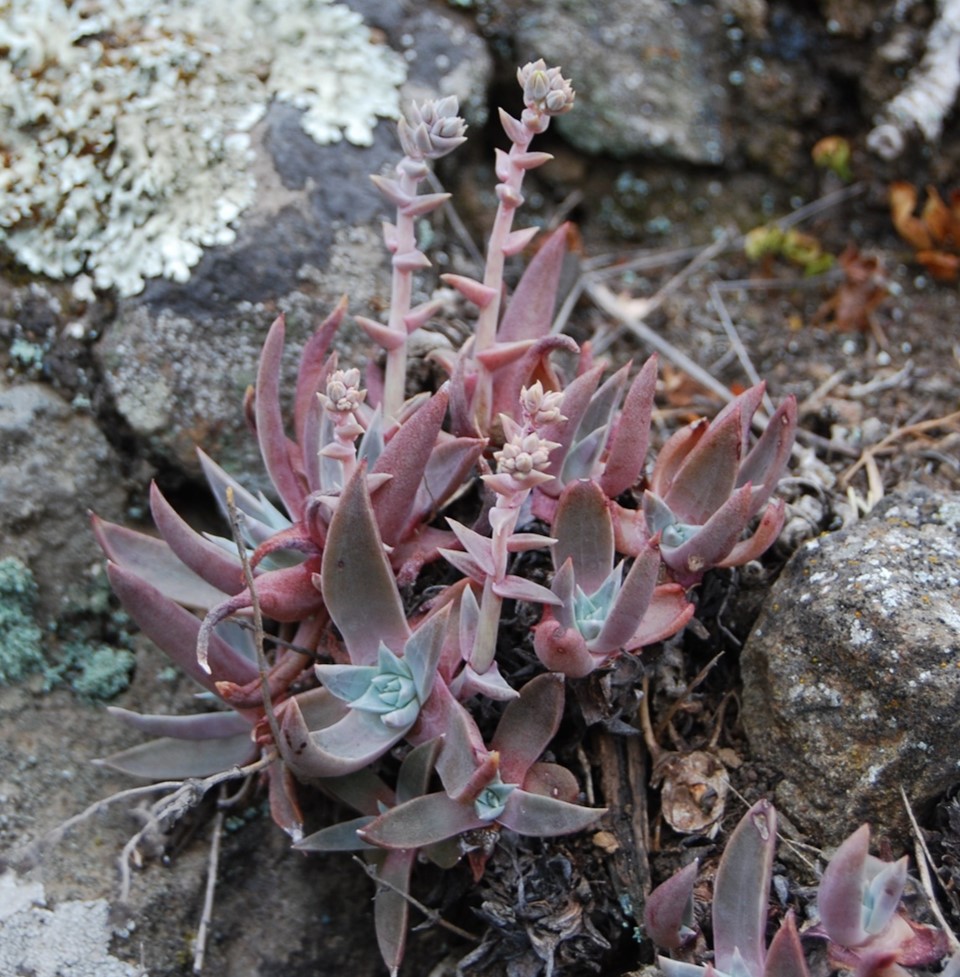 Dudleya verityi on the north slope of the hill to south of the CI campus, above Malibu Hall. Plants are close to flowering just two weeks before the Springs Fire (24 April 2013).
Dudleya verityi on the north slope of the hill to south of the CI campus, above Malibu Hall. Plants are close to flowering just two weeks before the Springs Fire (24 April 2013).
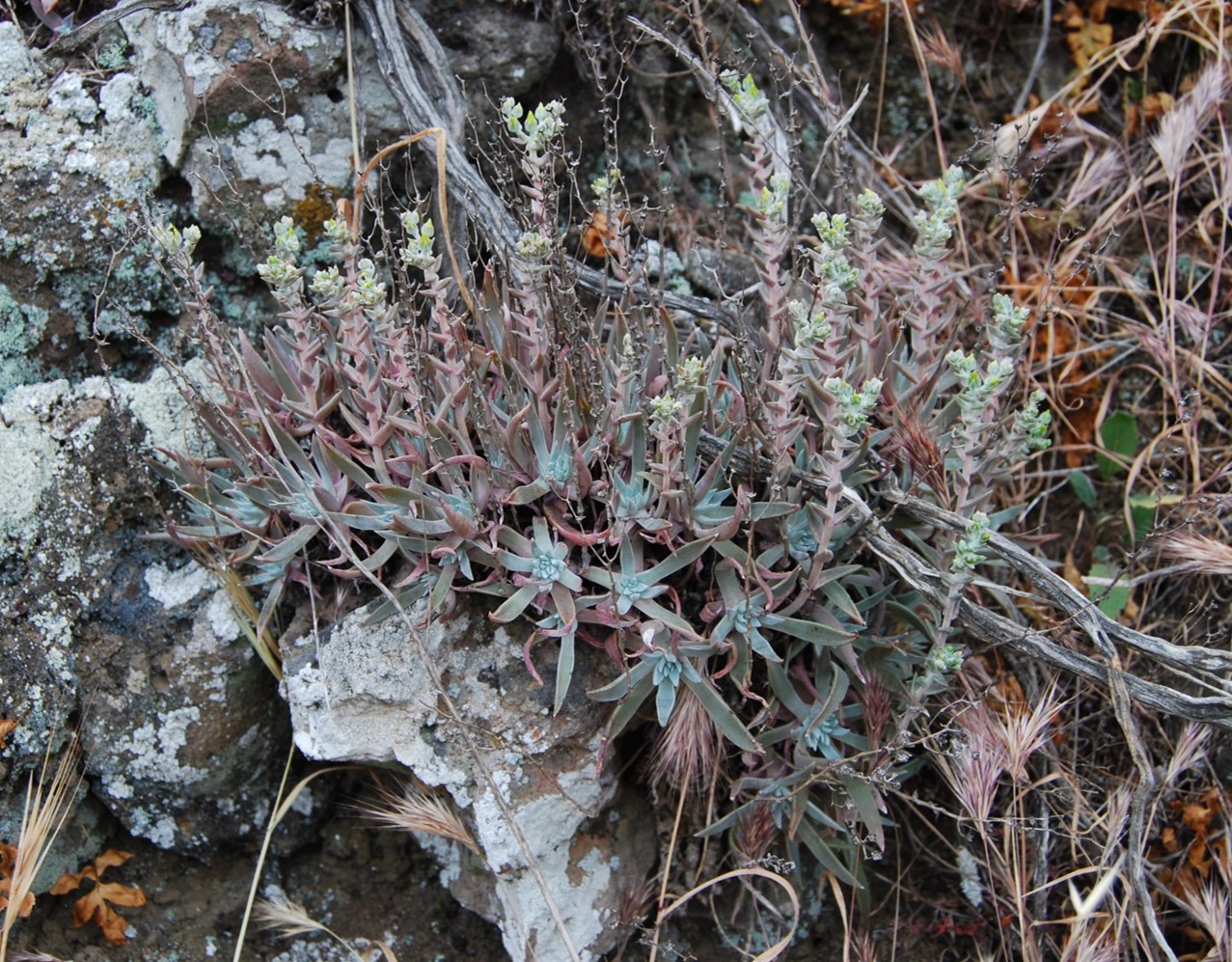 Dudleya verityi on the north slope of the hill to south of the CI campus, above Malibu Hall. Plants are close to flowering just two weeks before the Springs Fire (24 April 2013).
Dudleya verityi on the north slope of the hill to south of the CI campus, above Malibu Hall. Plants are close to flowering just two weeks before the Springs Fire (24 April 2013).
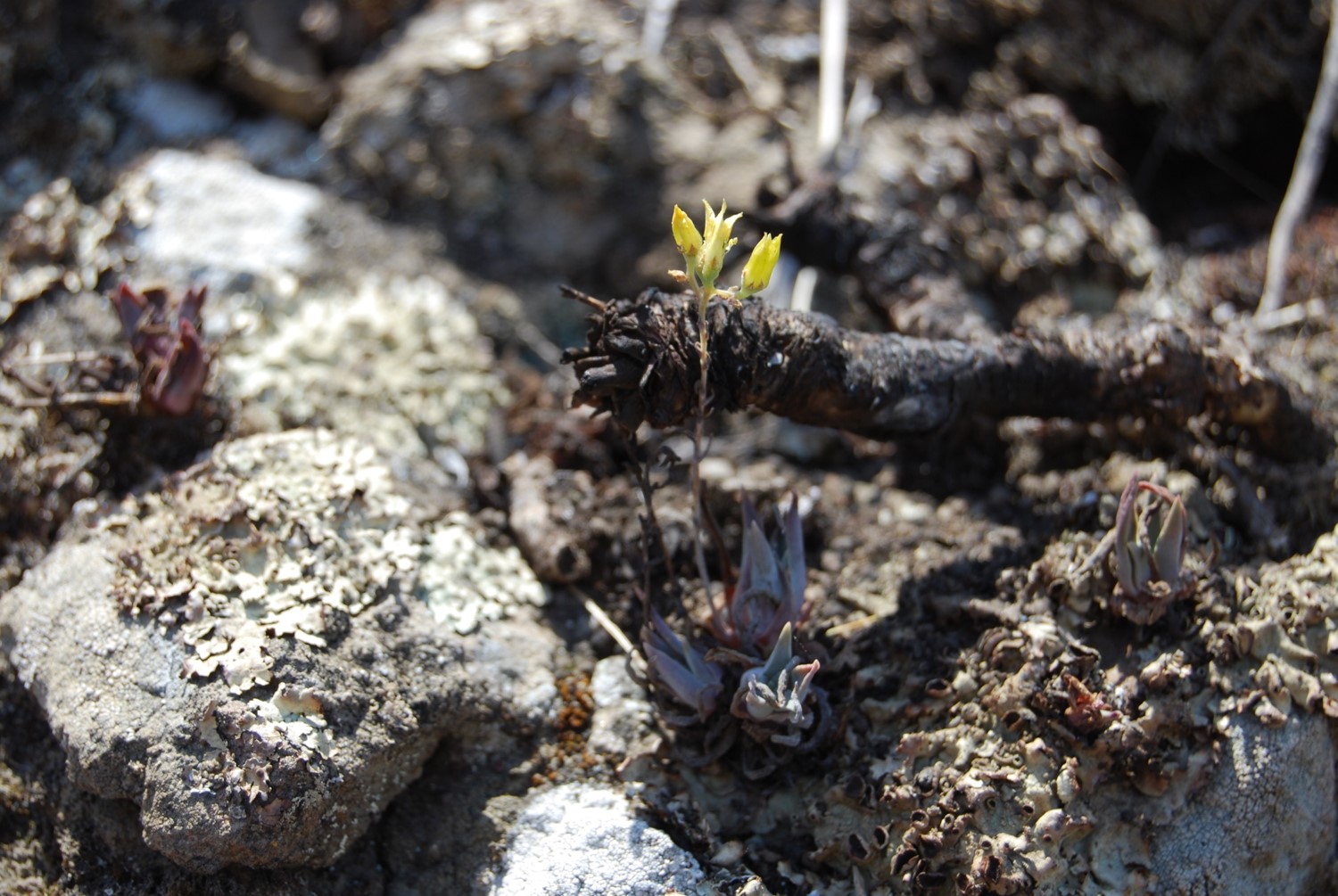
Dudleya verityi on north face of hill to south of CI campus, above Malibu Hall. Flowering one year following the fire (23 May 2014).
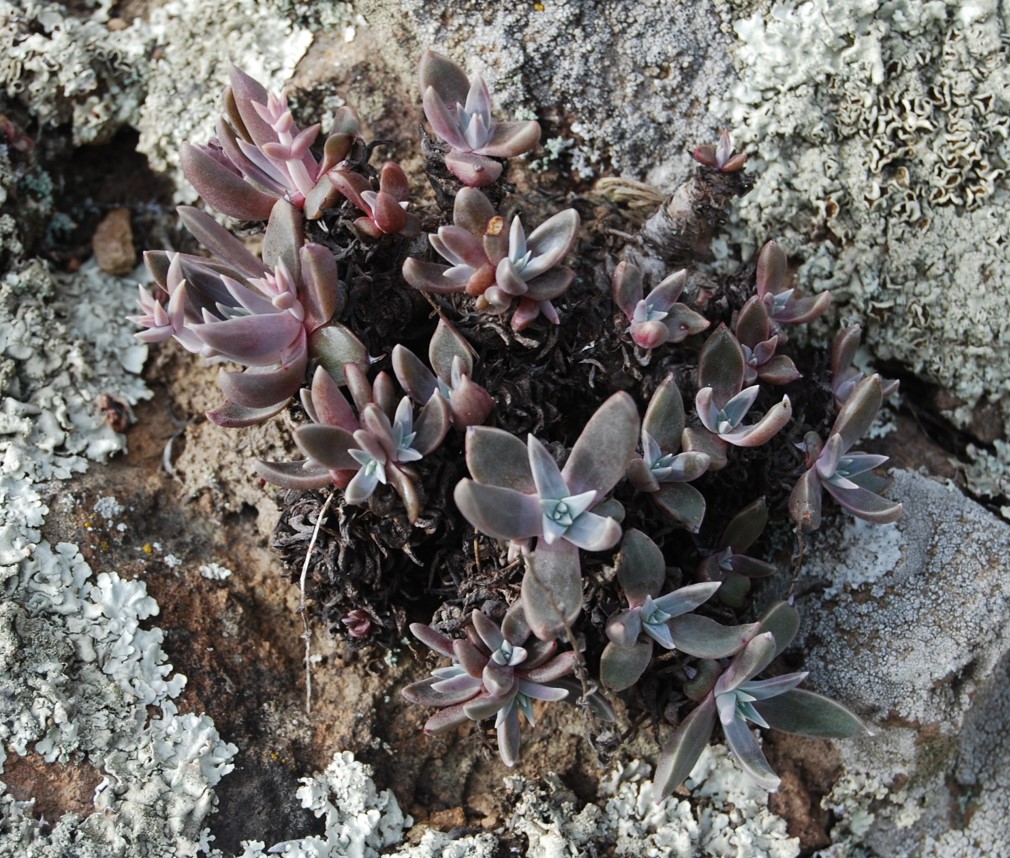 Dudleya verityi on north face of hill to south of CI campus, above Malibu Hall (10 April 2014).
Dudleya verityi on north face of hill to south of CI campus, above Malibu Hall (10 April 2014).
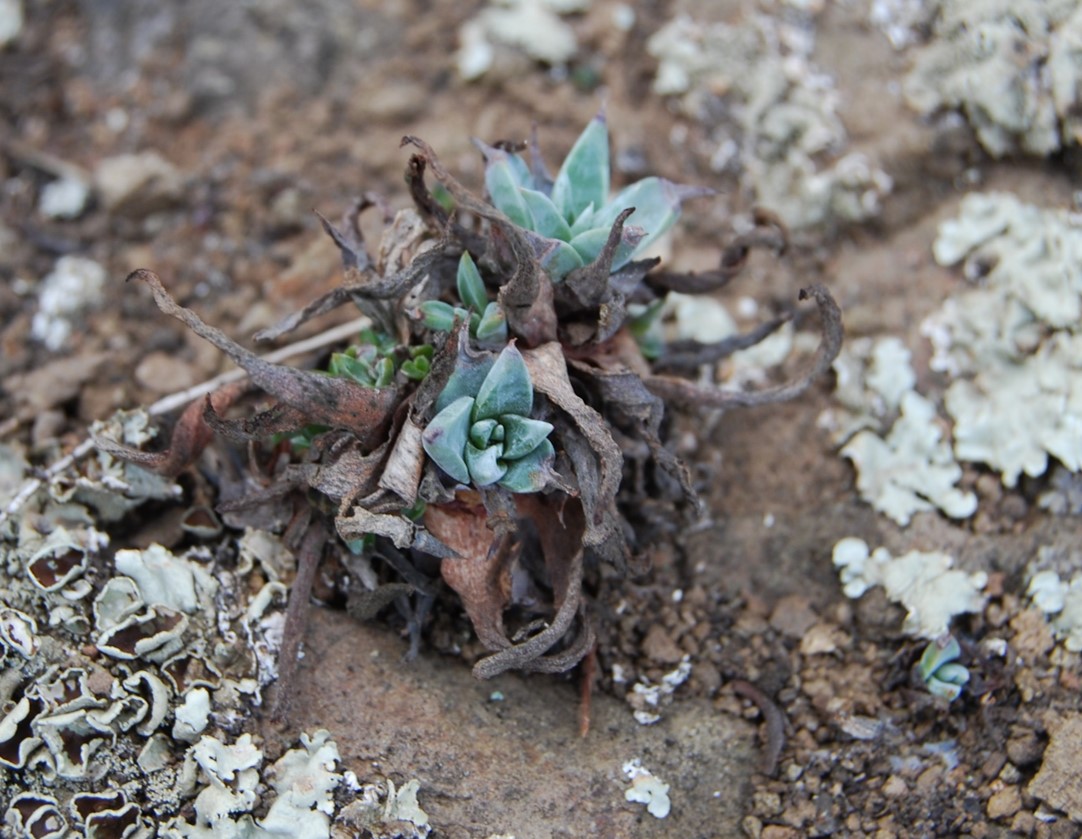 Dudleya verityi on north face of hill opposite (south) University Glen, CI campus. Plants that survived the Springs Fire of May 2013 start to show life with onset of Winter rains (22 November 2013).
Dudleya verityi on north face of hill opposite (south) University Glen, CI campus. Plants that survived the Springs Fire of May 2013 start to show life with onset of Winter rains (22 November 2013).
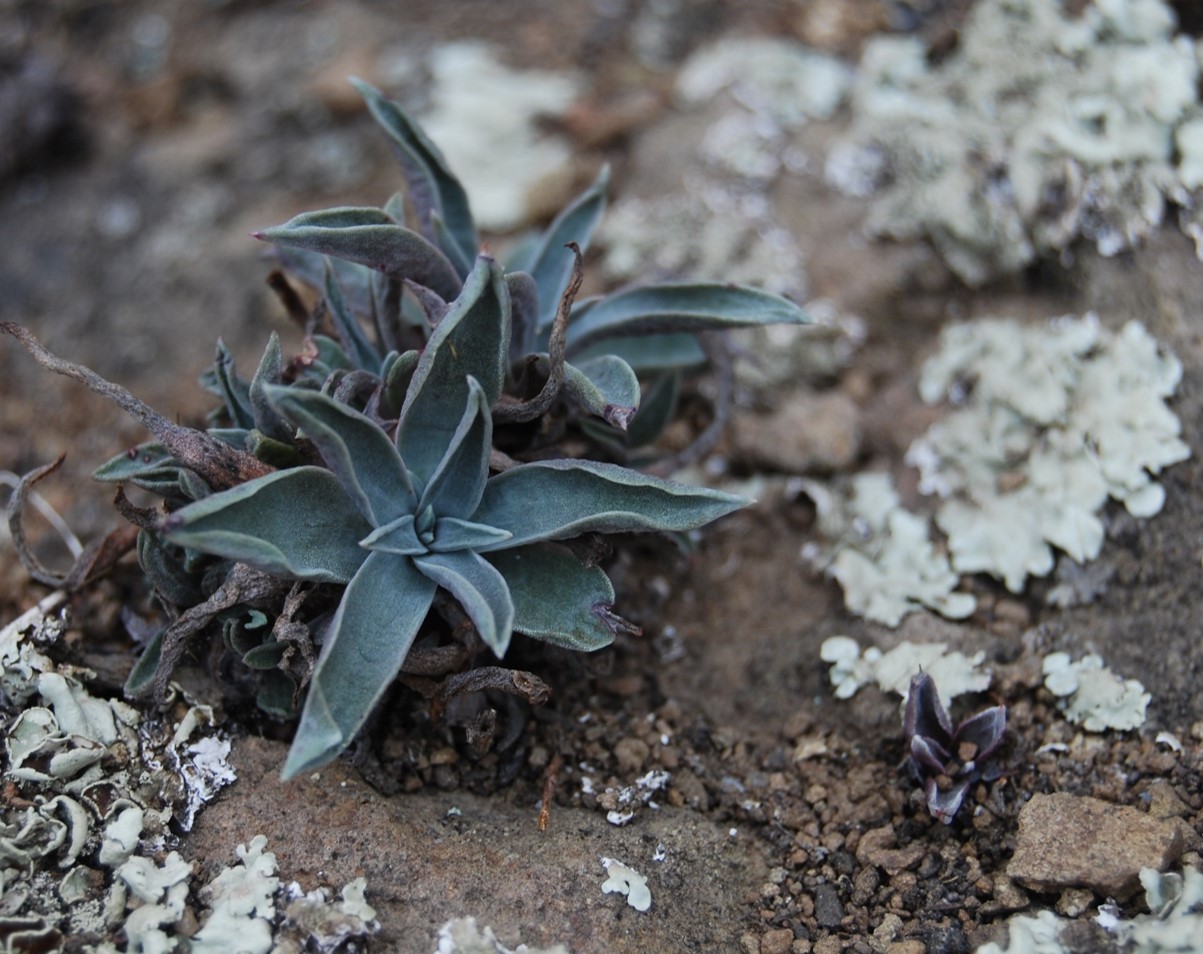 Dudleya verityi same plants as above a little further into the Winter rainy season (24 January 2014).
Dudleya verityi same plants as above a little further into the Winter rainy season (24 January 2014).
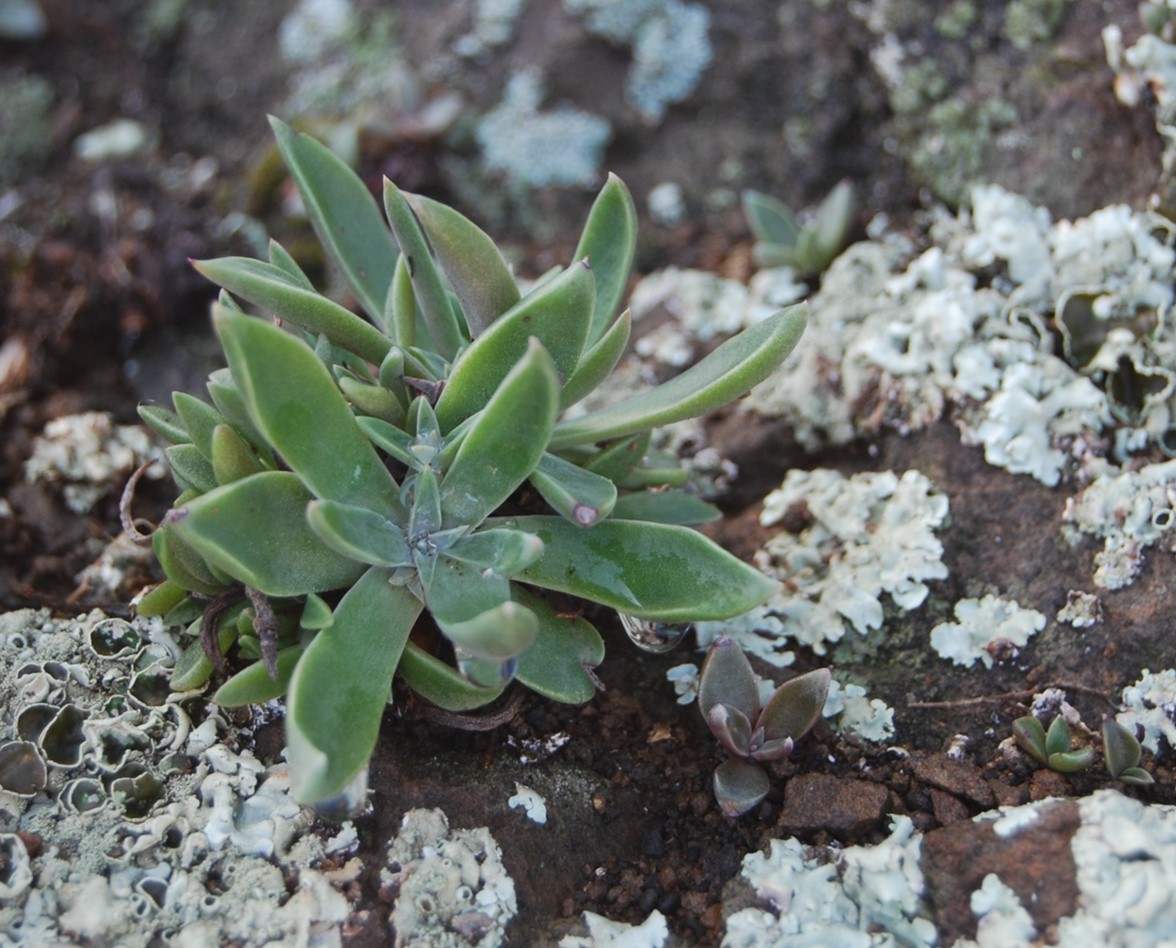 Dudleya verityi same plants as above (27 February 2014).
Dudleya verityi same plants as above (27 February 2014).
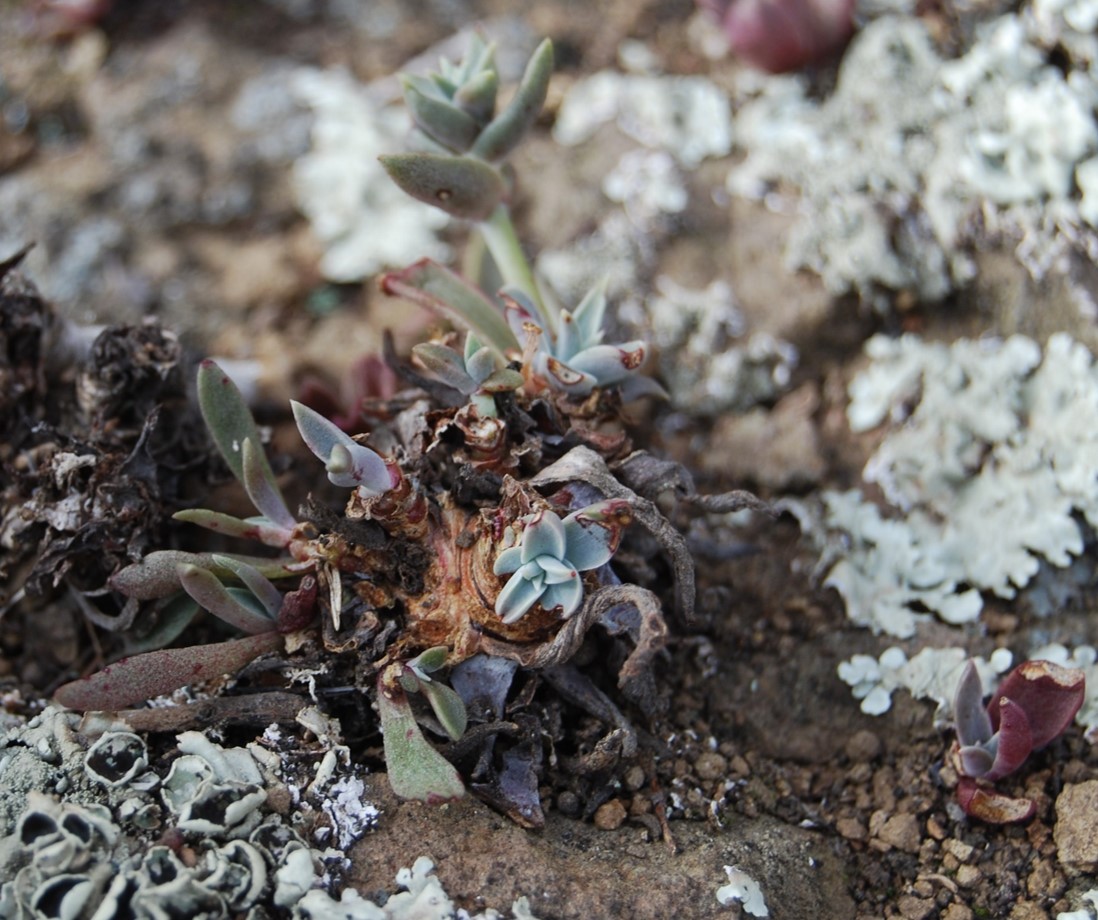 Dudleya verityi same plants as above, after being browsed by deer. (10 April 2014).
Dudleya verityi same plants as above, after being browsed by deer. (10 April 2014).
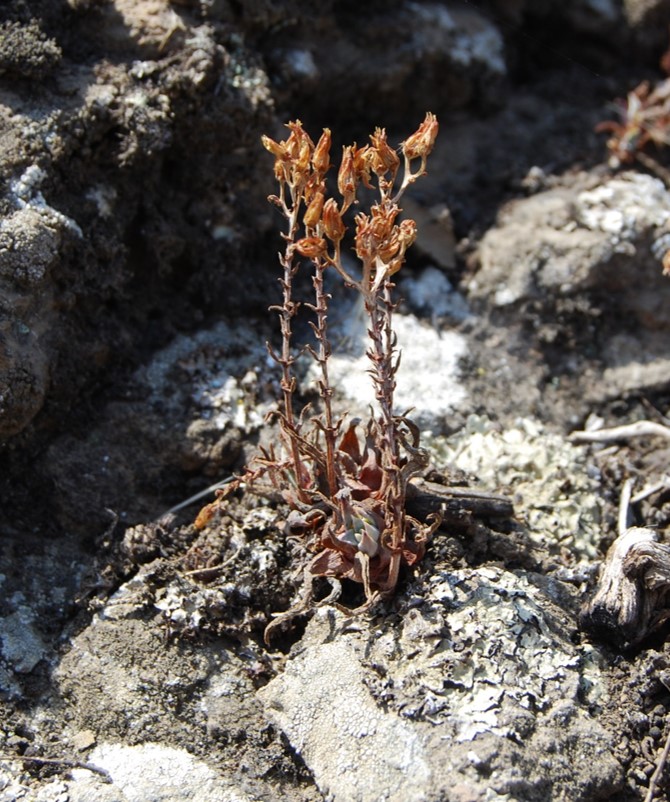 Dudleya verityi on north face of hill to south of CI campus, above Malibu Hall (15 July 2015).
Dudleya verityi on north face of hill to south of CI campus, above Malibu Hall (15 July 2015).
 Dudleya verityi on north face of hill opposite (south) University Glen, CI campus (15 May 2015).
Dudleya verityi on north face of hill opposite (south) University Glen, CI campus (15 May 2015).
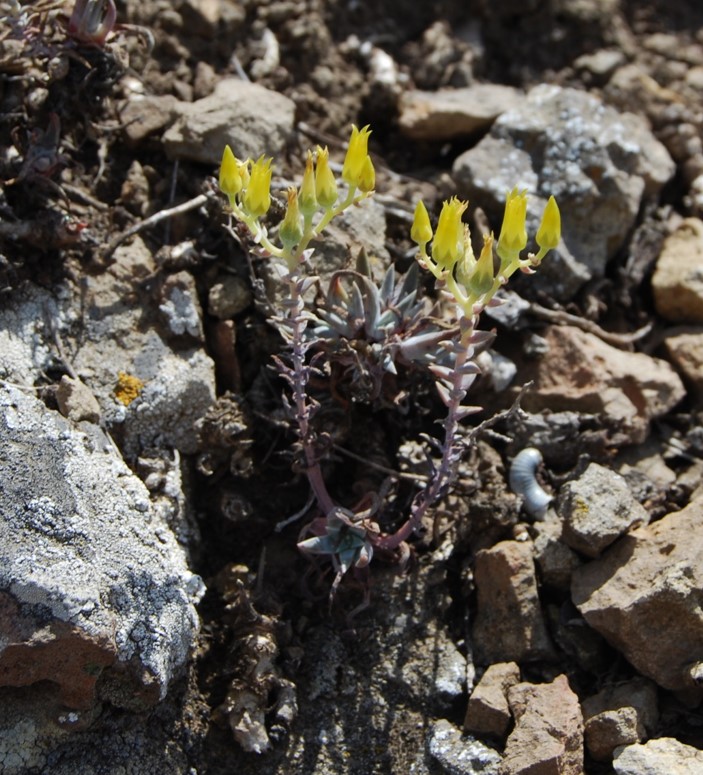 Dudleya verityi on north face of hill opposite (south) University Glen, CI campus (15 May 2015).
Dudleya verityi on north face of hill opposite (south) University Glen, CI campus (15 May 2015).
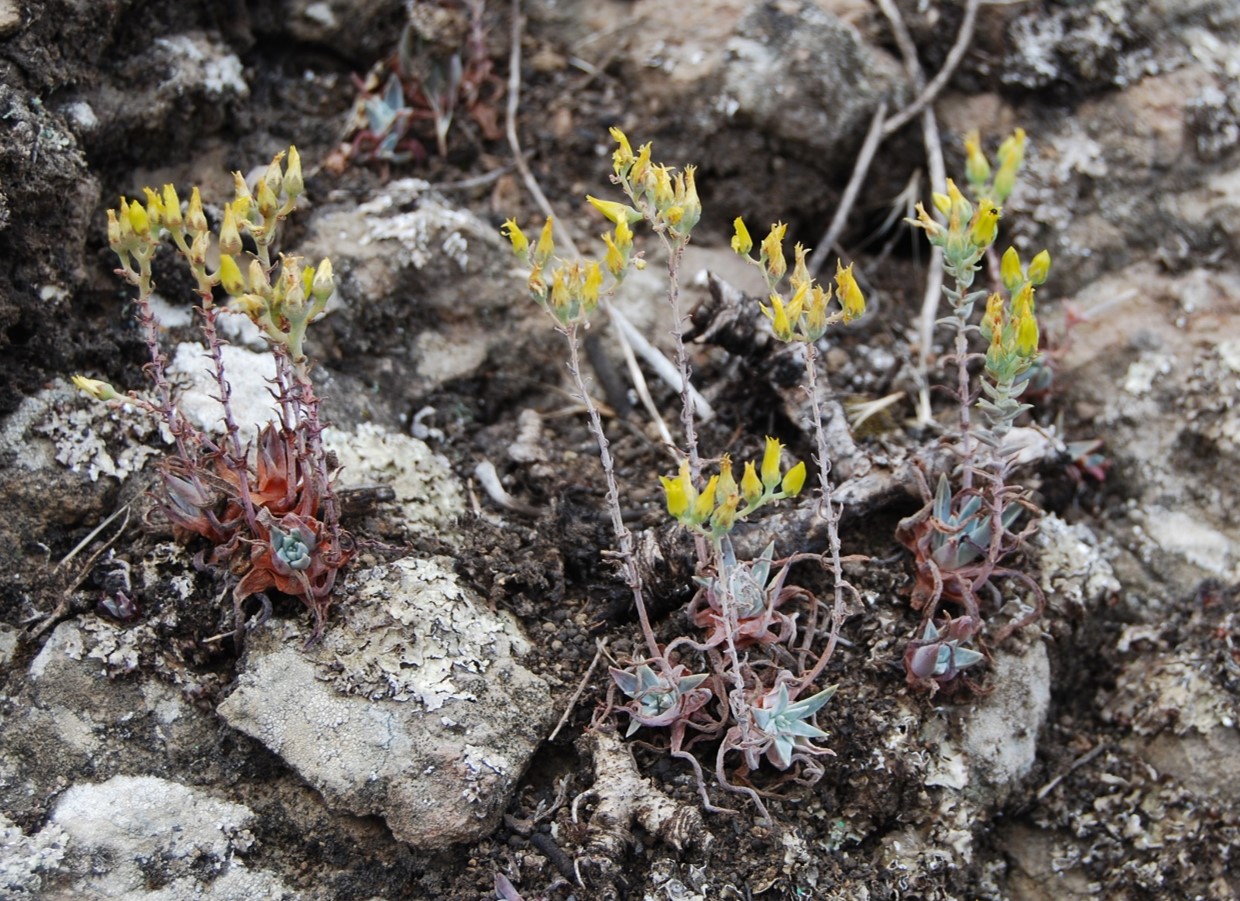 Dudleya verityi on north face of hill opposite (south) University Glen, CI campus (15 May 2015).
Dudleya verityi on north face of hill opposite (south) University Glen, CI campus (15 May 2015).
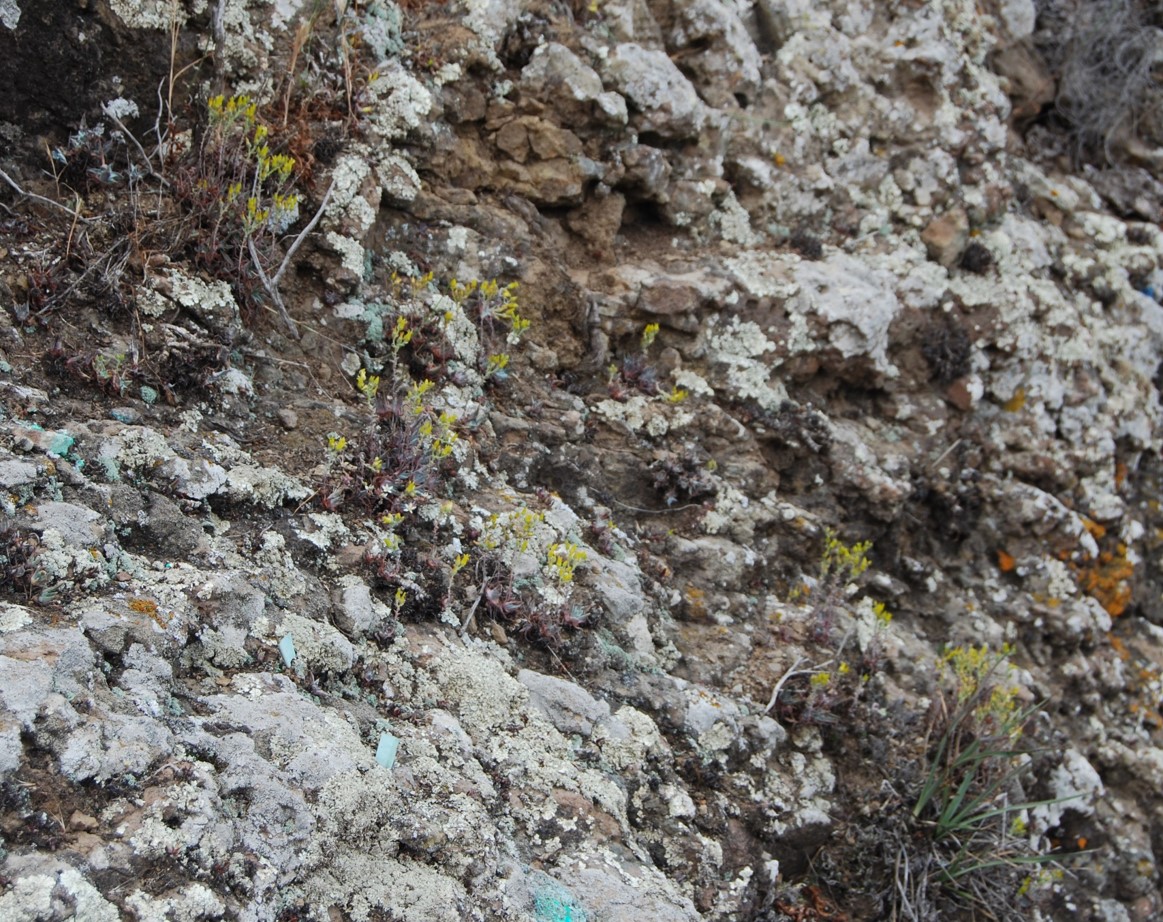 Dudleya verityi on north face of hill opposite (south) University Glen, CI campus (15 May 2015).
Dudleya verityi on north face of hill opposite (south) University Glen, CI campus (15 May 2015).
 Dudleya verityi on north face of hill opposite (south) University Glen, CI campus (15 May 2015).
Dudleya verityi on north face of hill opposite (south) University Glen, CI campus (15 May 2015).
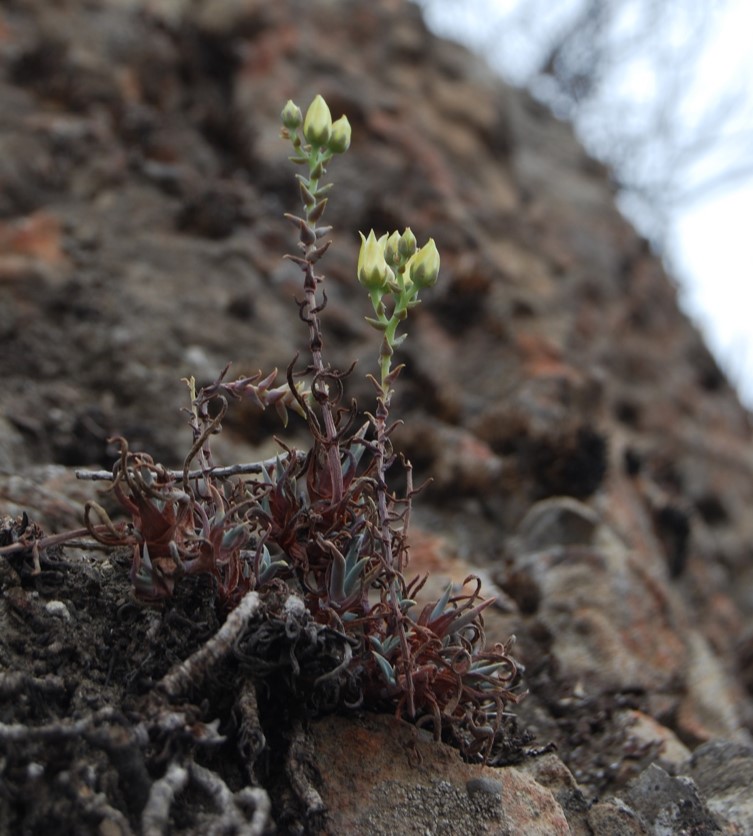 Dudleya verityi University Park on rock face to south west of model airplane field. Very few plants on site survived the Springs Fire (1 June 2015).
Dudleya verityi University Park on rock face to south west of model airplane field. Very few plants on site survived the Springs Fire (1 June 2015).
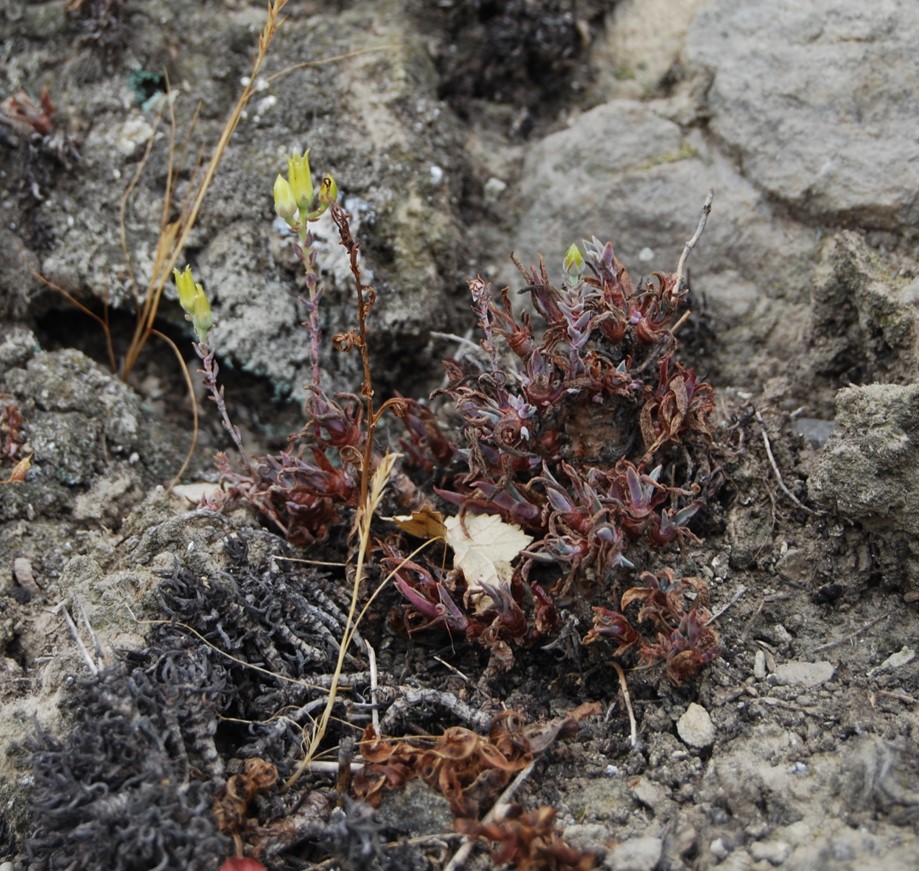 Dudleya verityi University Park on rock face to south west of model airplane field. Note remains of fire killed plants to lower left (1 June 2015).
Dudleya verityi University Park on rock face to south west of model airplane field. Note remains of fire killed plants to lower left (1 June 2015).
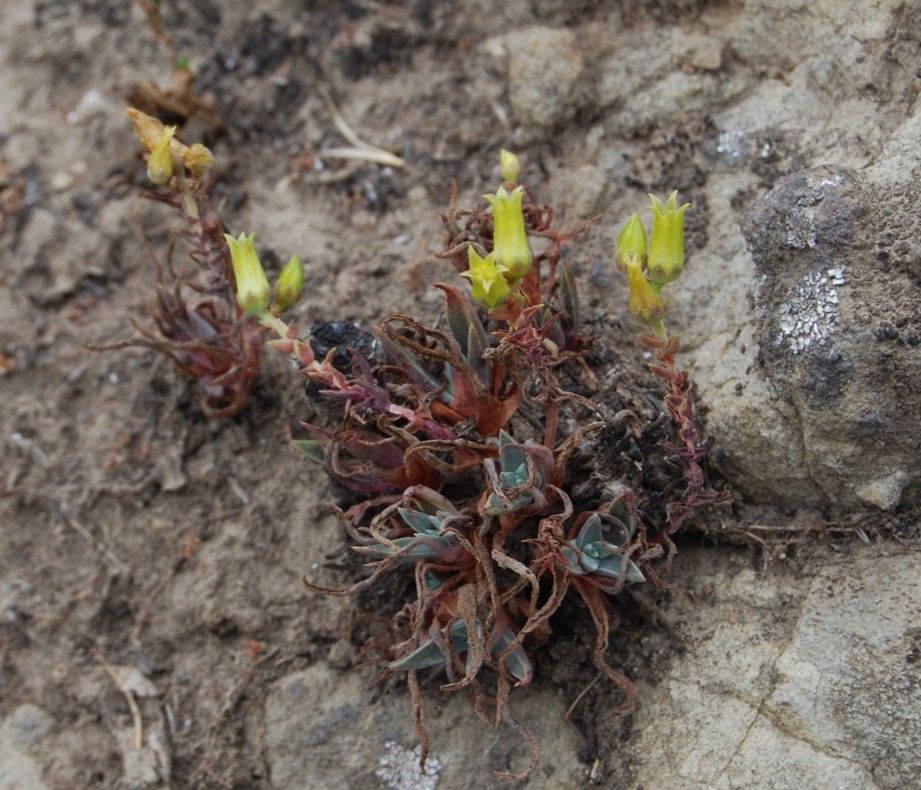 Dudleya verityi University Park on rock face to south west of model airplane field (1 June 2015).
Dudleya verityi University Park on rock face to south west of model airplane field (1 June 2015).
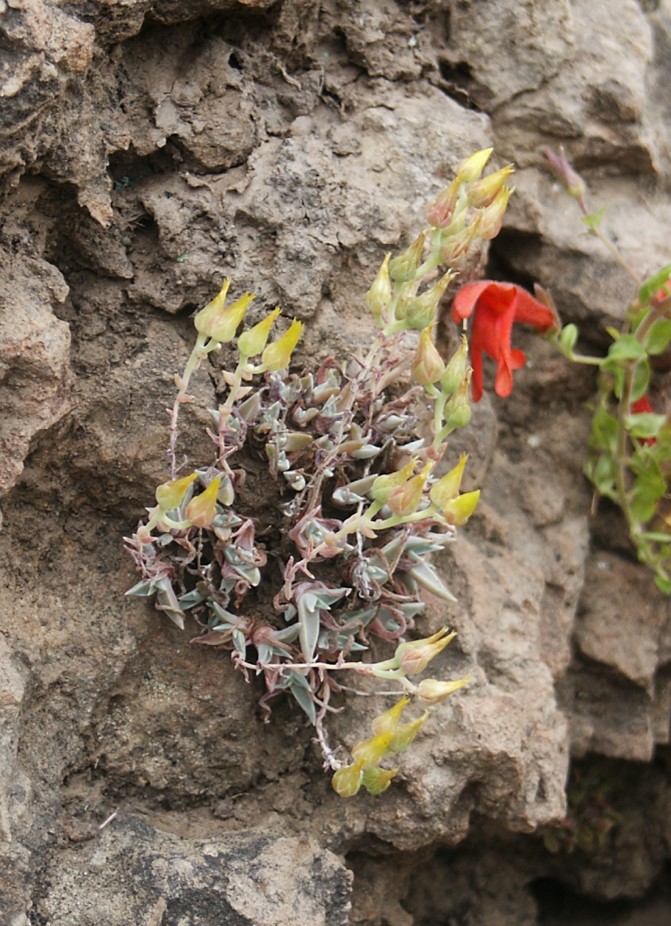
Dudleya verityi high on the rocky cliffs to the south of University Glen, CI campus. The red flowers belong to Keckiella cordifolia, a species observed only twice on CI habitats (and not seen since the Springs Fire) (22 June 2003).
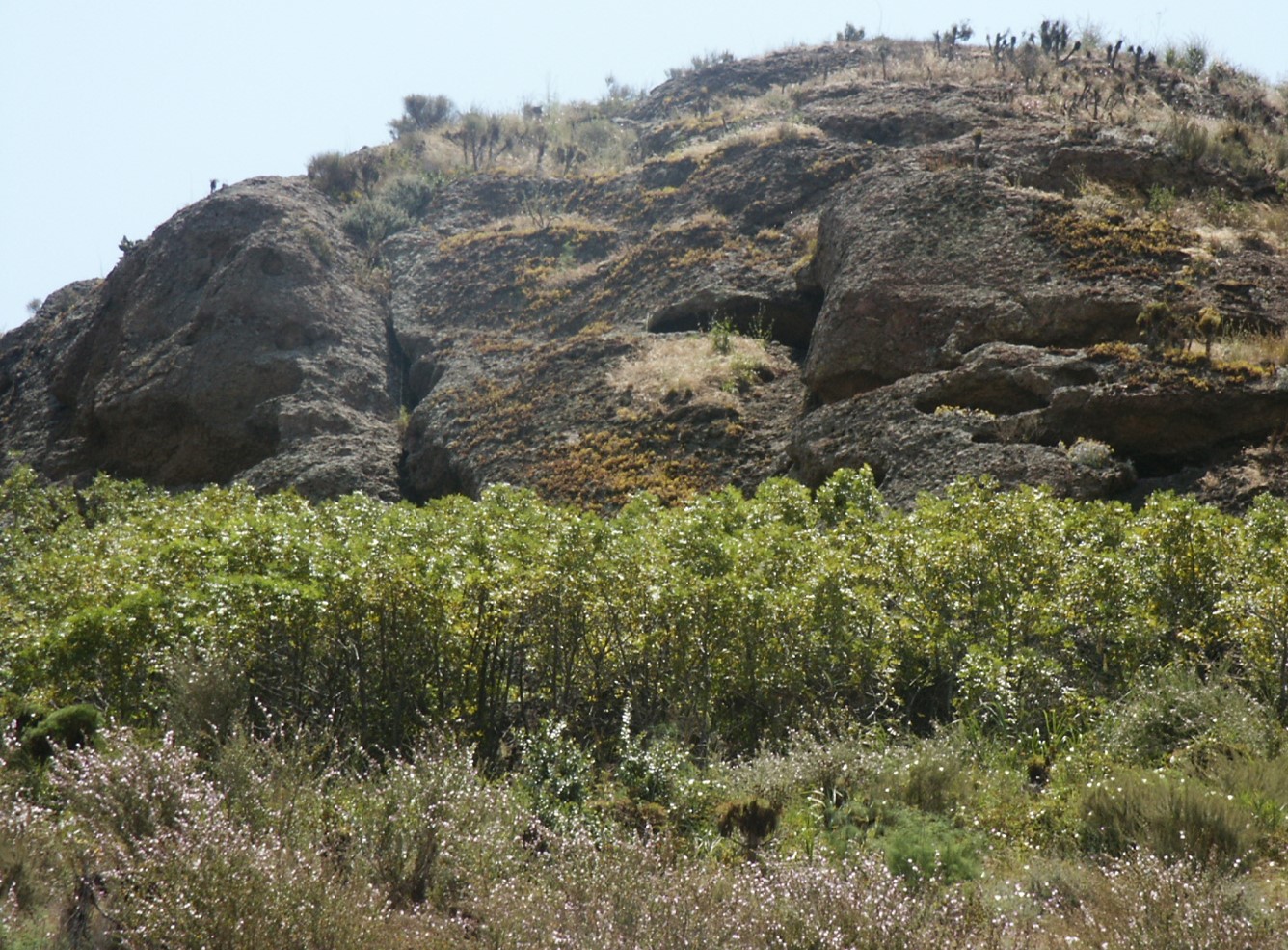 Dense patches of flowering Dudleya verityi high on rocky cliffs to south of University Glen, CI campus (14 June 2003).
Dense patches of flowering Dudleya verityi high on rocky cliffs to south of University Glen, CI campus (14 June 2003).
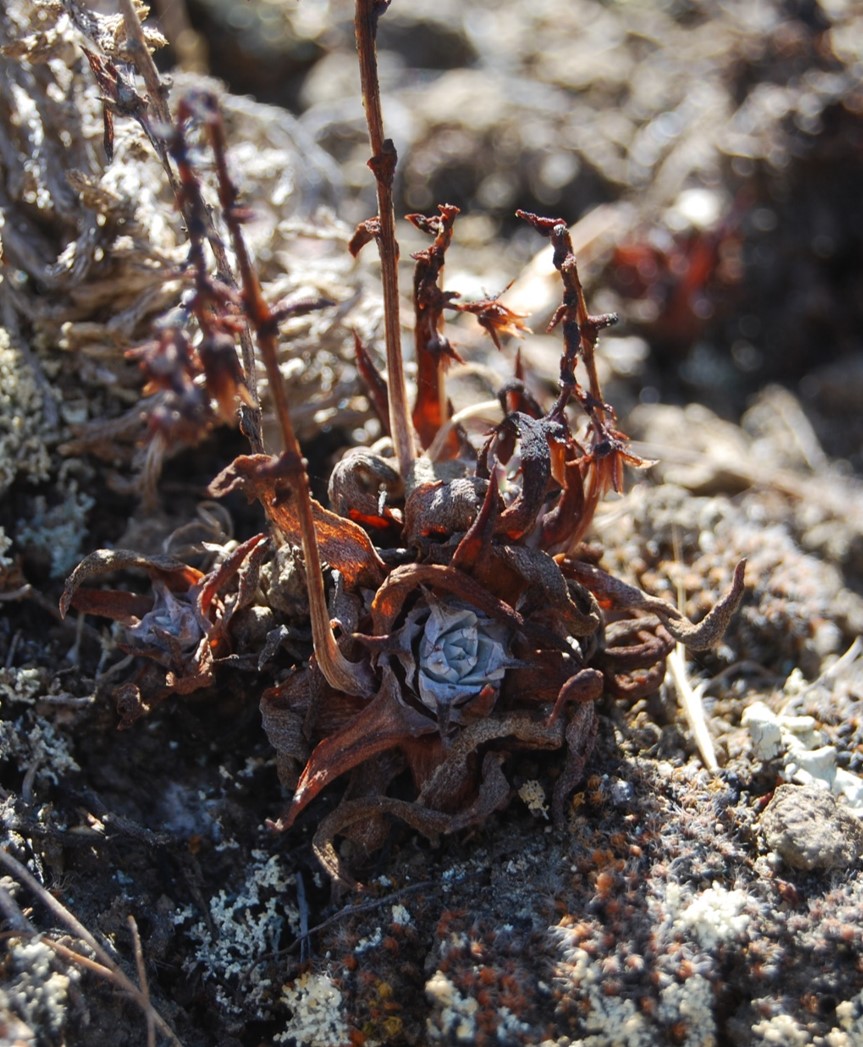
Dudleya verityi on the north face of the hill to south of the CI campus, above Malibu Hall. Although a great many plants were killed by the Springs Fire of May 2013, the central core of some survived, see here waiting for the Winter rains. Note fire damaged and killed lichens (30 August 2013).
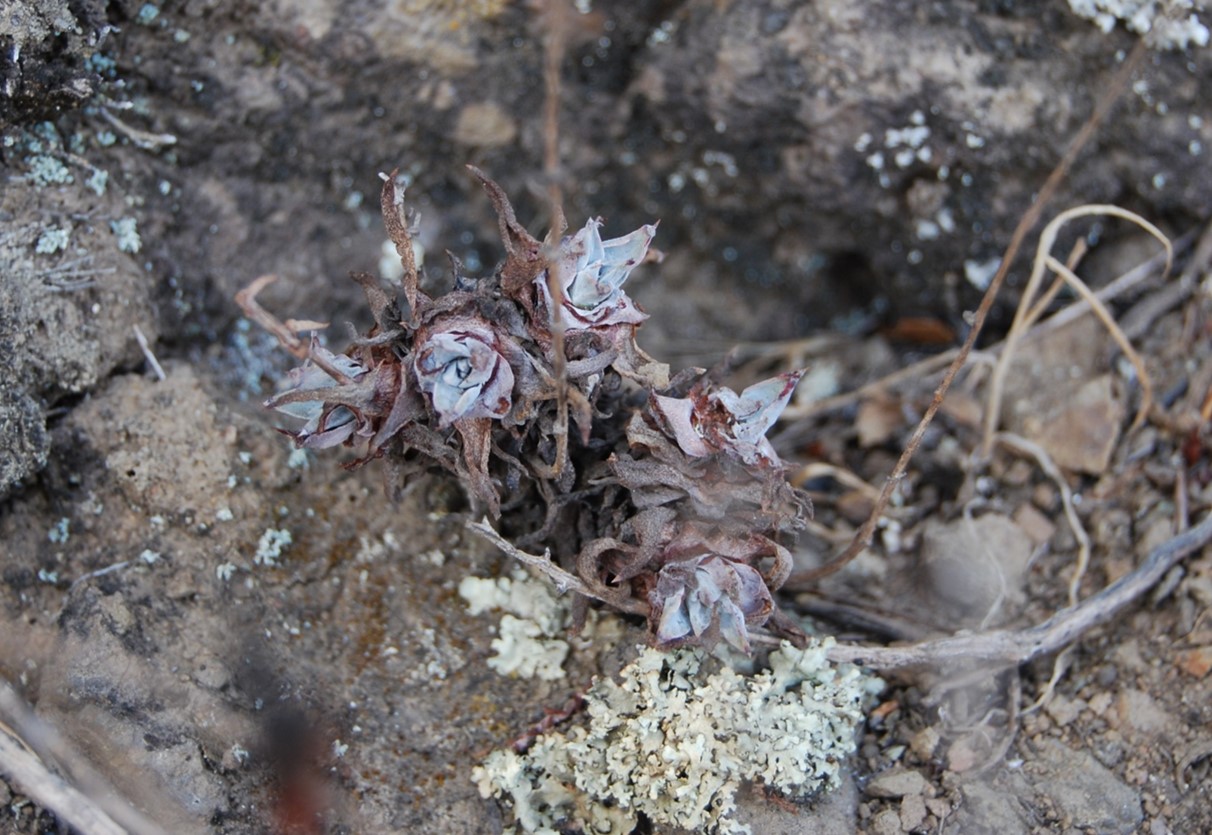 Dudleya verityi on north face of hill opposite (south) University Glen, CI campus. Plants that survived the Springs Fire of May 2013 showed some signs of life even before the full onset of Winter rains (22 October 2013).
Dudleya verityi on north face of hill opposite (south) University Glen, CI campus. Plants that survived the Springs Fire of May 2013 showed some signs of life even before the full onset of Winter rains (22 October 2013).
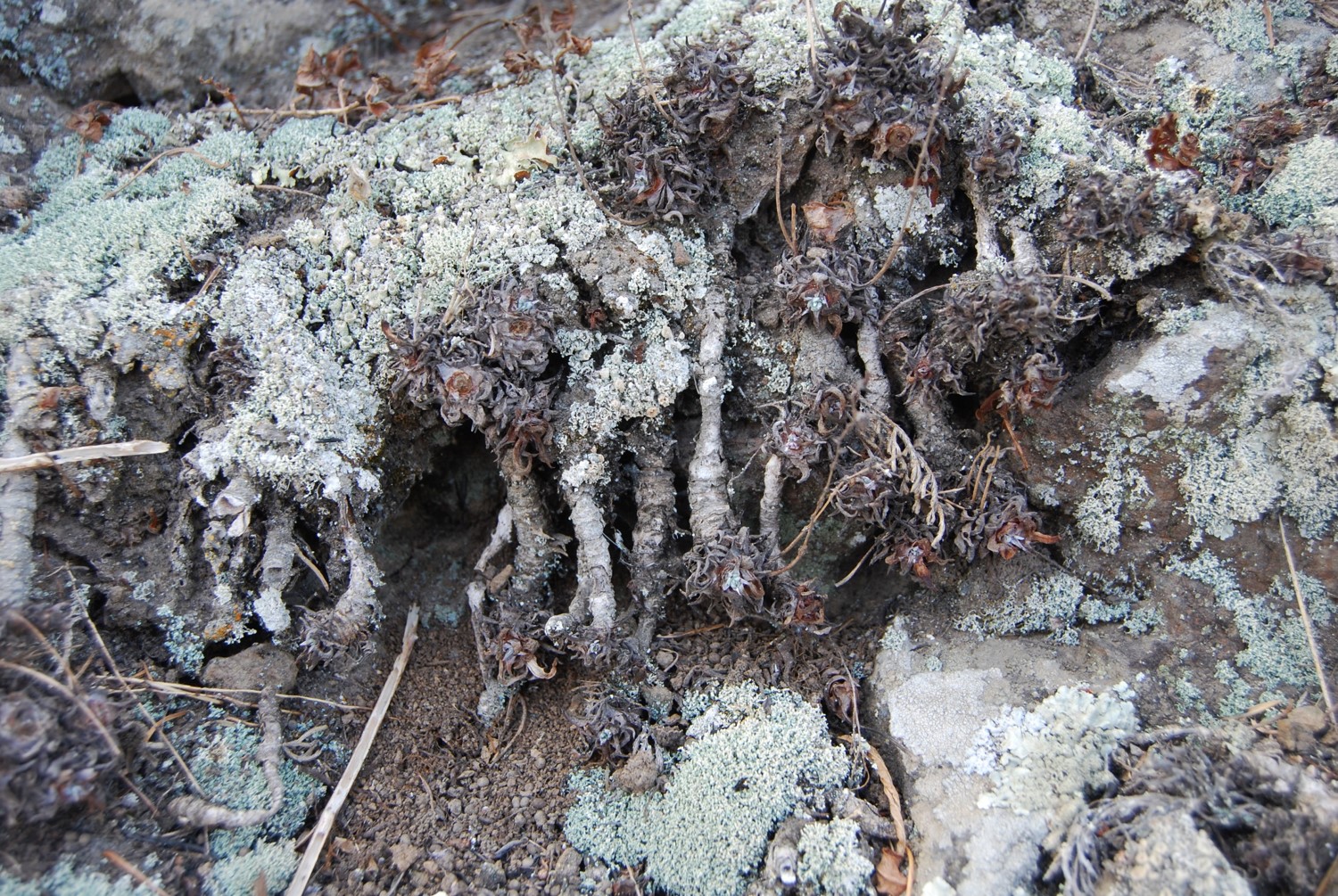 Dudleya verityi on north face of hill opposite (south) University Glen, CI campus. Plants that survived the Springs Fire of May 2013 showed some signs of life even before the full onset of Winter rains (22 October 2013).
Dudleya verityi on north face of hill opposite (south) University Glen, CI campus. Plants that survived the Springs Fire of May 2013 showed some signs of life even before the full onset of Winter rains (22 October 2013).
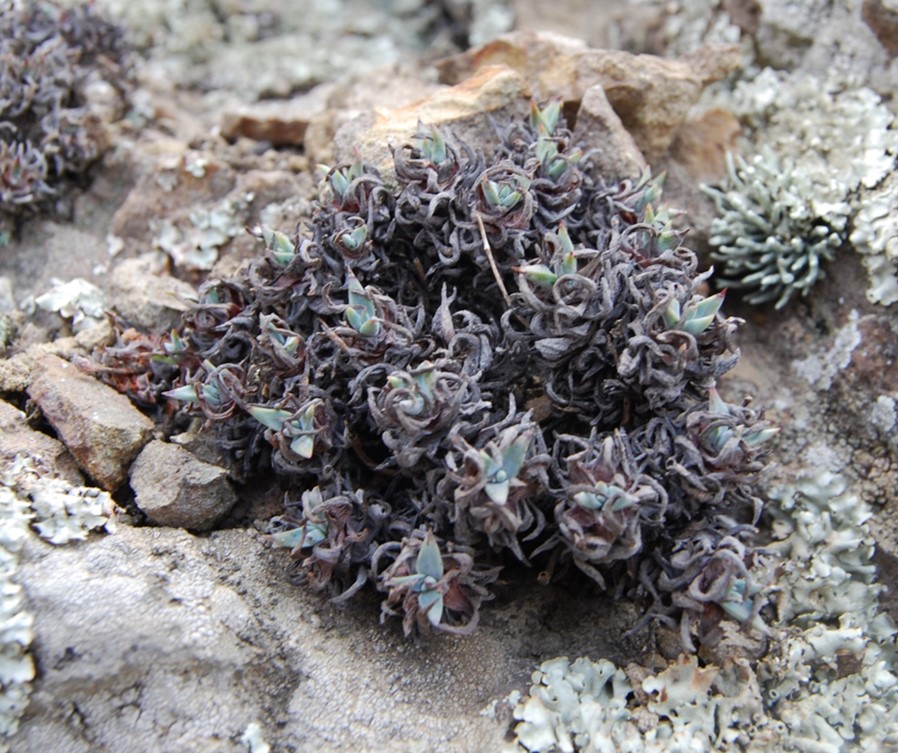 Dudleya verityi on north face of hill opposite (south) University Glen, CI campus. Plants that survived the Springs Fire of May 2013 start to show life with onset of Winter rains (22 November 2013).
Dudleya verityi on north face of hill opposite (south) University Glen, CI campus. Plants that survived the Springs Fire of May 2013 start to show life with onset of Winter rains (22 November 2013).
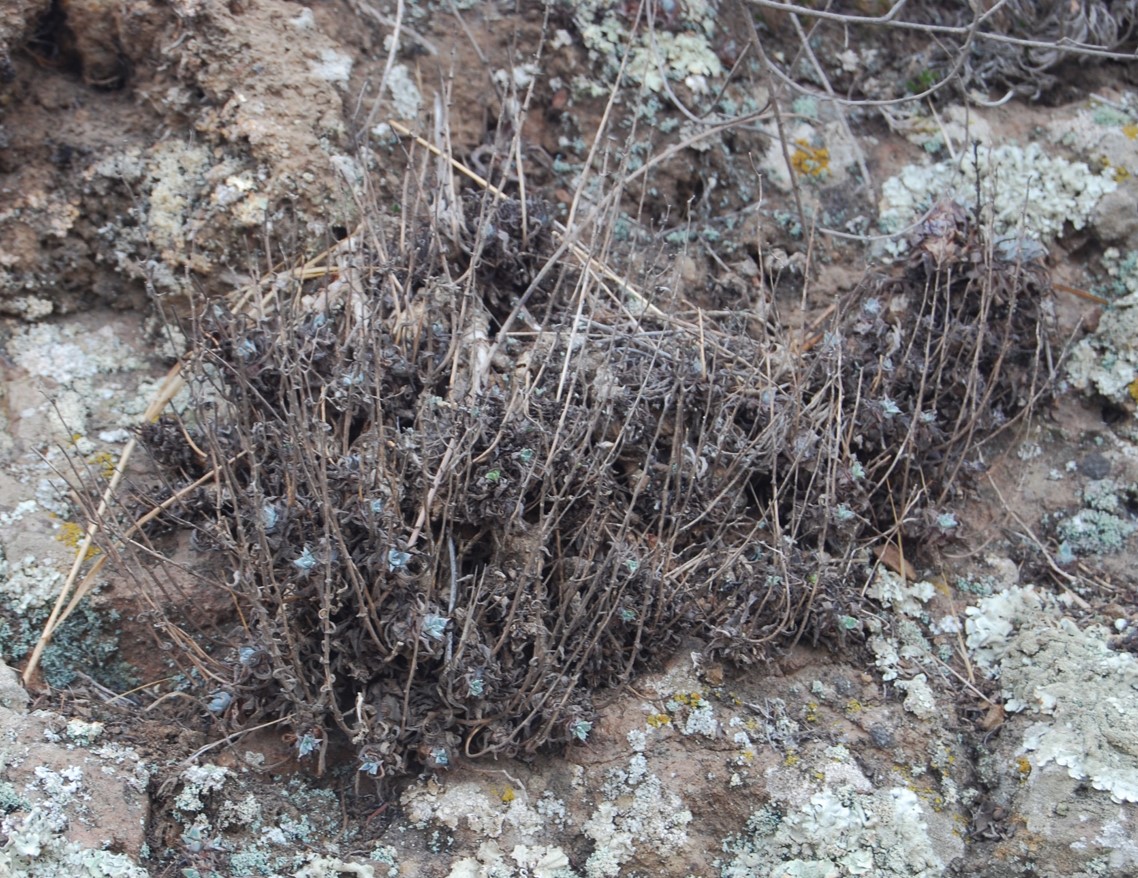 Dudleya verityi on north face of hill opposite (south) University Glen, CI campus. Plants that survived the Springs Fire of May 2013 start to show life with onset of Winter rains (22 November 2013).
Dudleya verityi on north face of hill opposite (south) University Glen, CI campus. Plants that survived the Springs Fire of May 2013 start to show life with onset of Winter rains (22 November 2013).
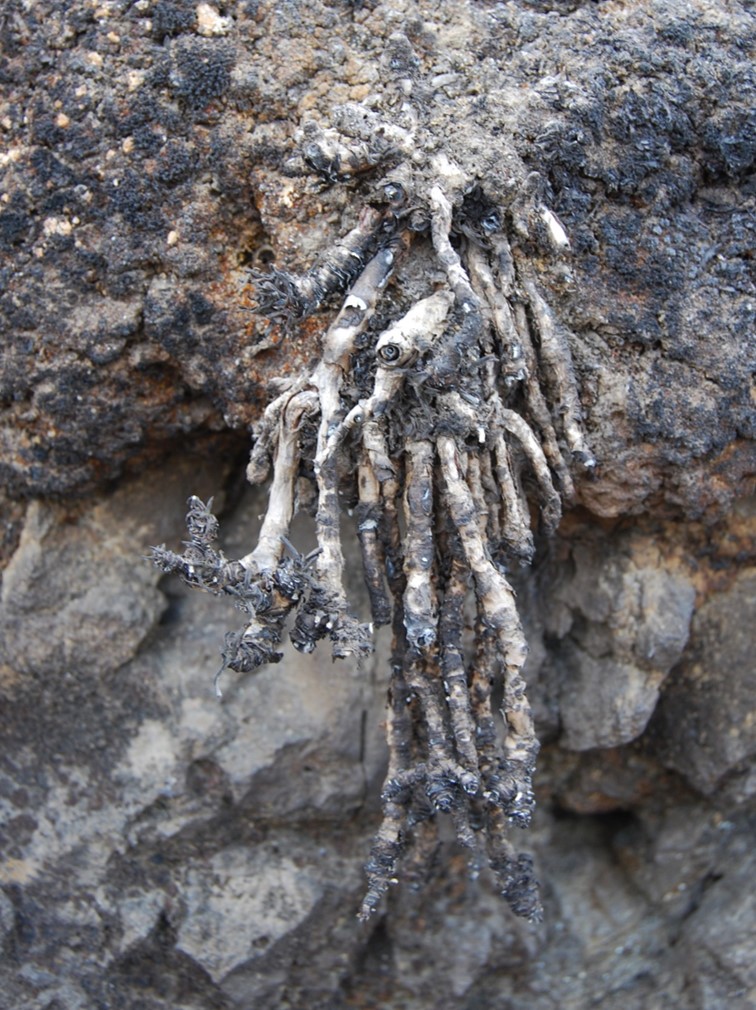 Dudleya verityi on north face of hill opposite (south) University Glen, CI campus. Plants that did not survive the Springs Fire of May 2013 (22 November 2013).
Dudleya verityi on north face of hill opposite (south) University Glen, CI campus. Plants that did not survive the Springs Fire of May 2013 (22 November 2013).
 Dudleya verityi on north face of hill opposite (south) University Glen, CI campus. Plants that survived the Springs Fire of May 2013 start to show life with onset of Winter rains (24 January 2014).
Dudleya verityi on north face of hill opposite (south) University Glen, CI campus. Plants that survived the Springs Fire of May 2013 start to show life with onset of Winter rains (24 January 2014).
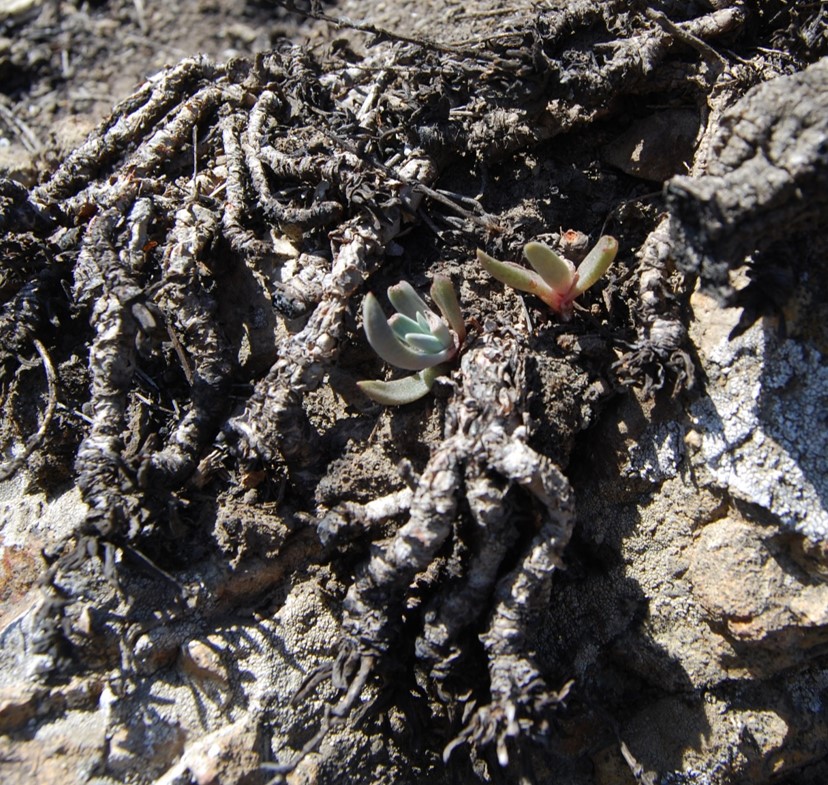 Dudleya verityi University Park on slope to the southwest of Model airplane park. Two of the very few plants that survived the Springs Fire show signs of life (26 April 2014).
Dudleya verityi University Park on slope to the southwest of Model airplane park. Two of the very few plants that survived the Springs Fire show signs of life (26 April 2014).
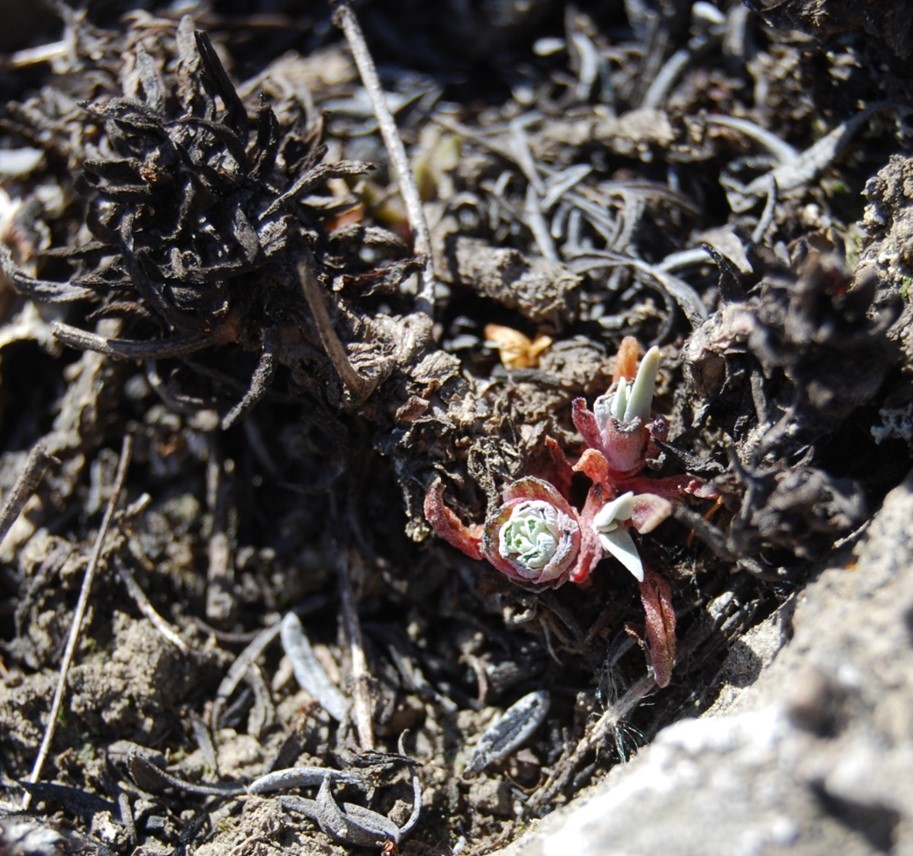 Dudleya verityi University Park on slope to the southwest of Model airplane park (26 April 2014).
Dudleya verityi University Park on slope to the southwest of Model airplane park (26 April 2014).
 Dudleya verityi University Park on slope to the southwest of Model airplane park. One of the very few plants that survived the Springs Fire show signs of life (26 April 2014).
Dudleya verityi University Park on slope to the southwest of Model airplane park. One of the very few plants that survived the Springs Fire show signs of life (26 April 2014).
 Dudleya verityi University Park on slope to the southwest of Model airplane park. Rock face with plants killed by the Springs Fire of May 2013. (26 January 2014).
Dudleya verityi University Park on slope to the southwest of Model airplane park. Rock face with plants killed by the Springs Fire of May 2013. (26 January 2014).
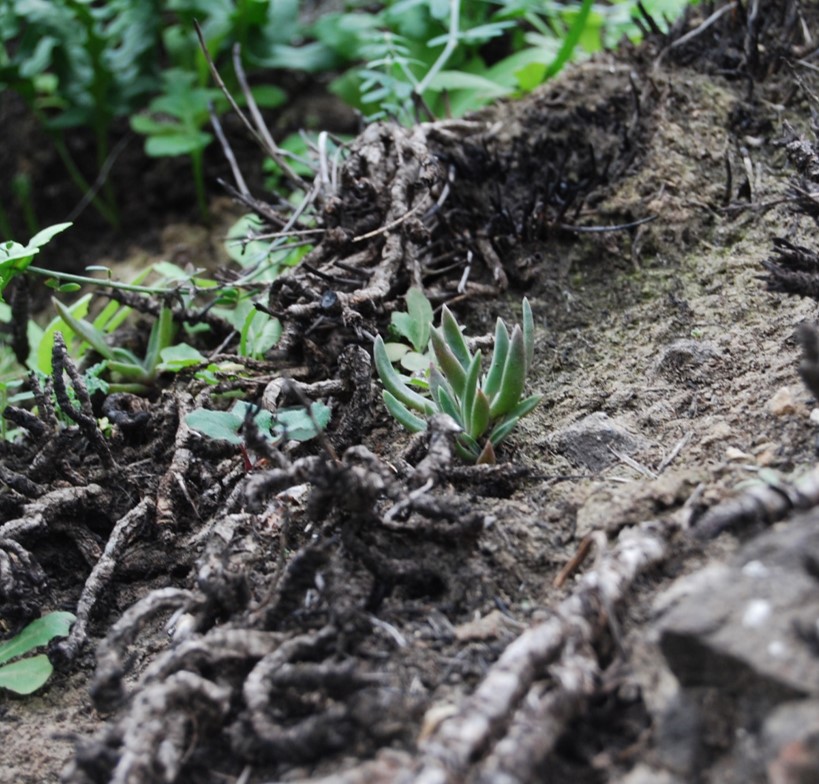 Dudleya verityi University Park on slope to the southwest of Model airplane park. A living plant emerges from the wreckage of the Springs Fire of May 2013 (26 January 2014).
Dudleya verityi University Park on slope to the southwest of Model airplane park. A living plant emerges from the wreckage of the Springs Fire of May 2013 (26 January 2014).
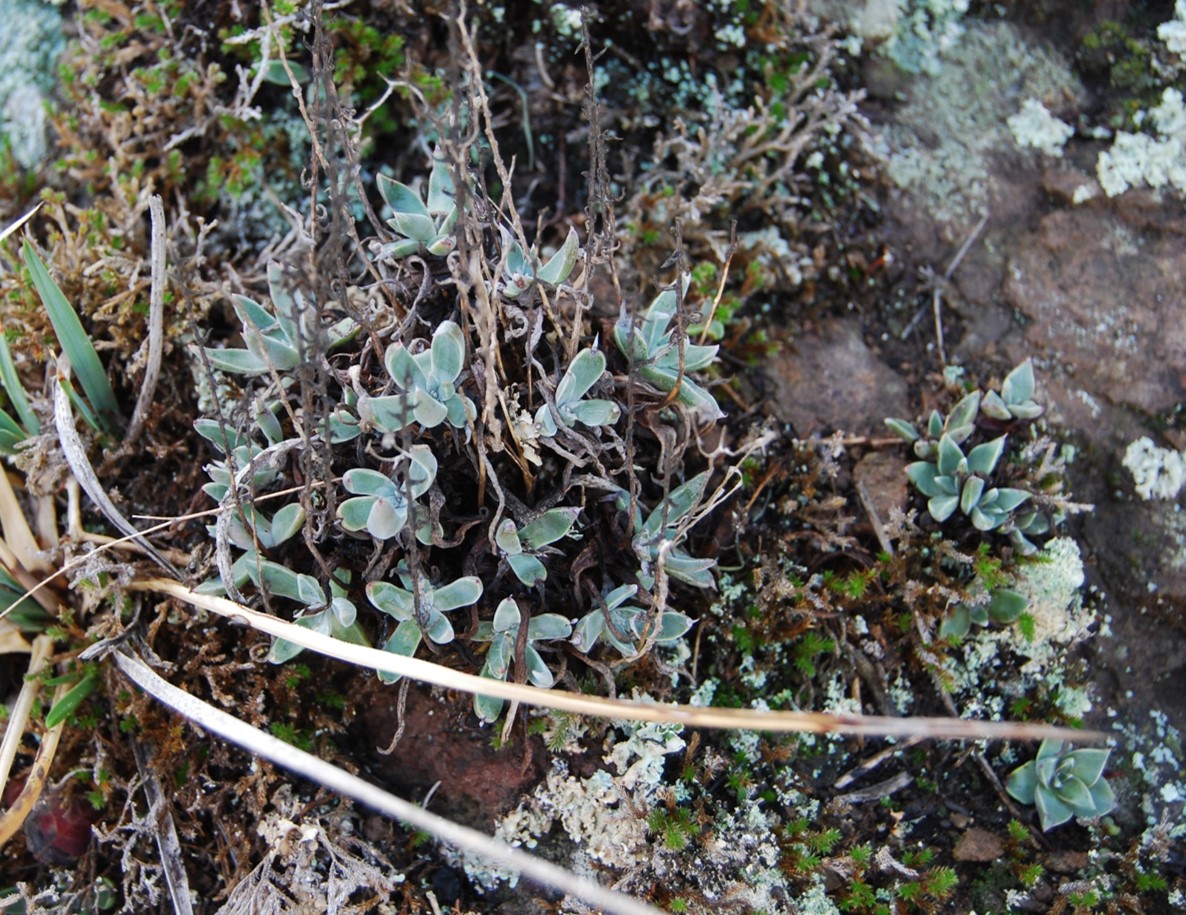 Dudleya verityi on north face of hill opposite (south) University Glen, CI campus (27 February 2014).
Dudleya verityi on north face of hill opposite (south) University Glen, CI campus (27 February 2014).
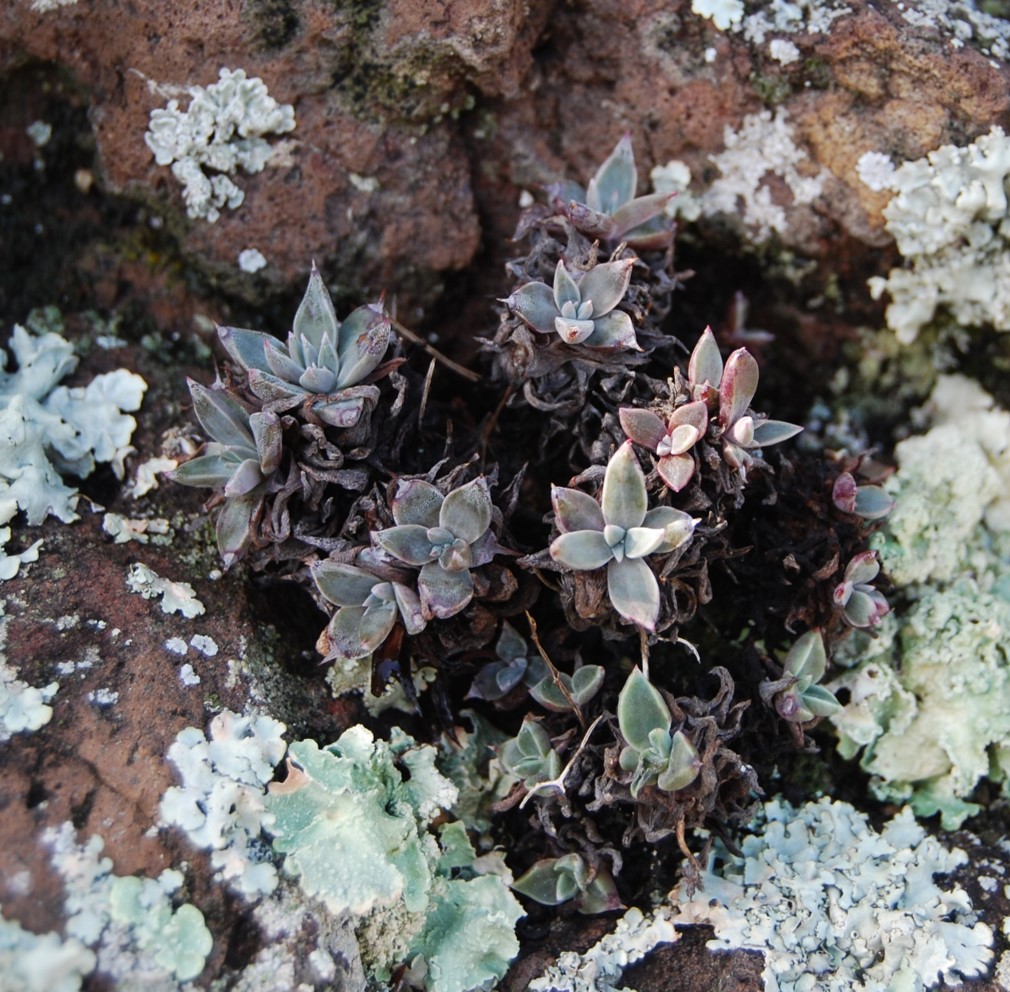 Dudleya verityi on north face of hill opposite (south) University Glen, CI campus (27 February 2014).
Dudleya verityi on north face of hill opposite (south) University Glen, CI campus (27 February 2014).
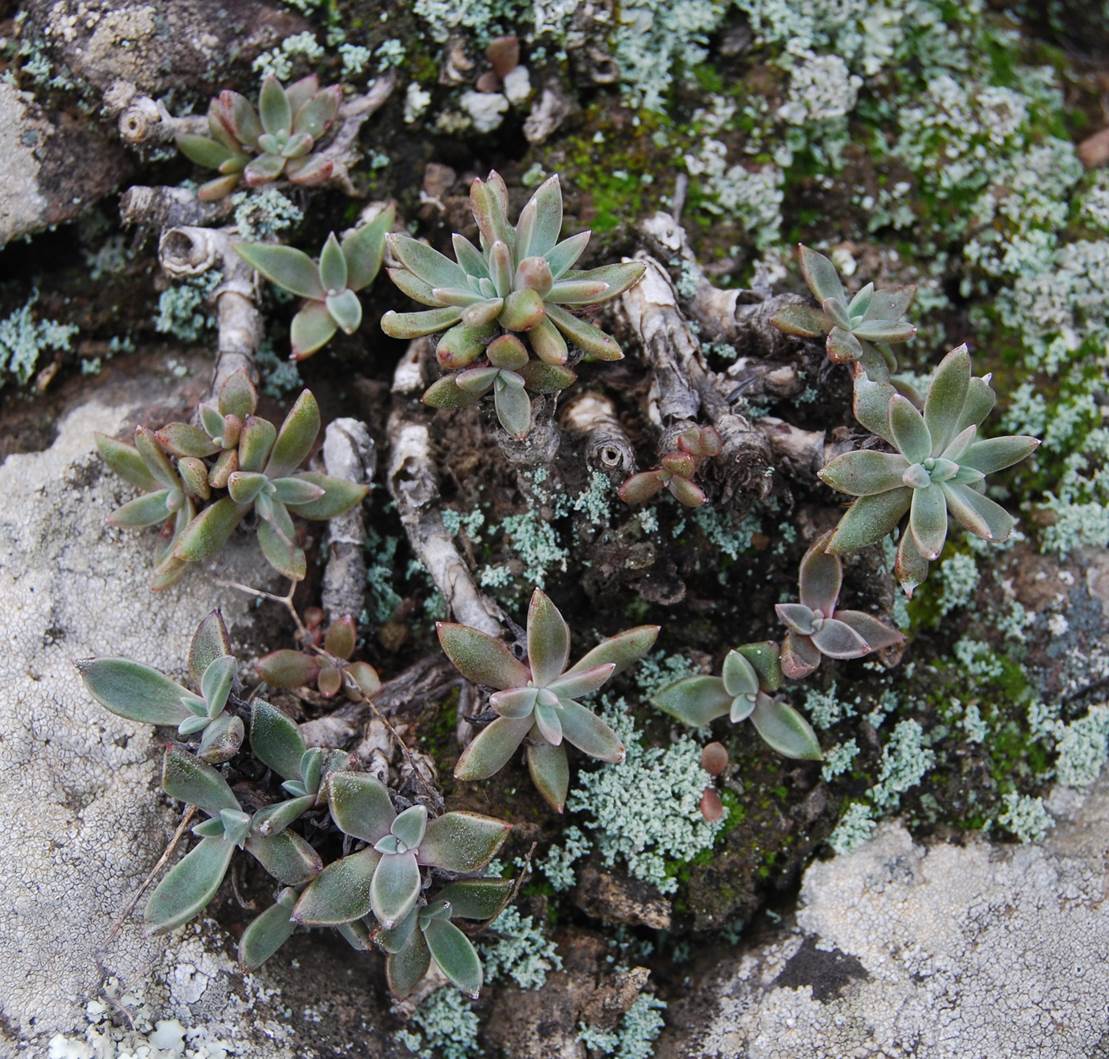 Dudleya verityi on north face of hill to south of CI campus, above Malibu Hall (29 January 2013).
Dudleya verityi on north face of hill to south of CI campus, above Malibu Hall (29 January 2013).
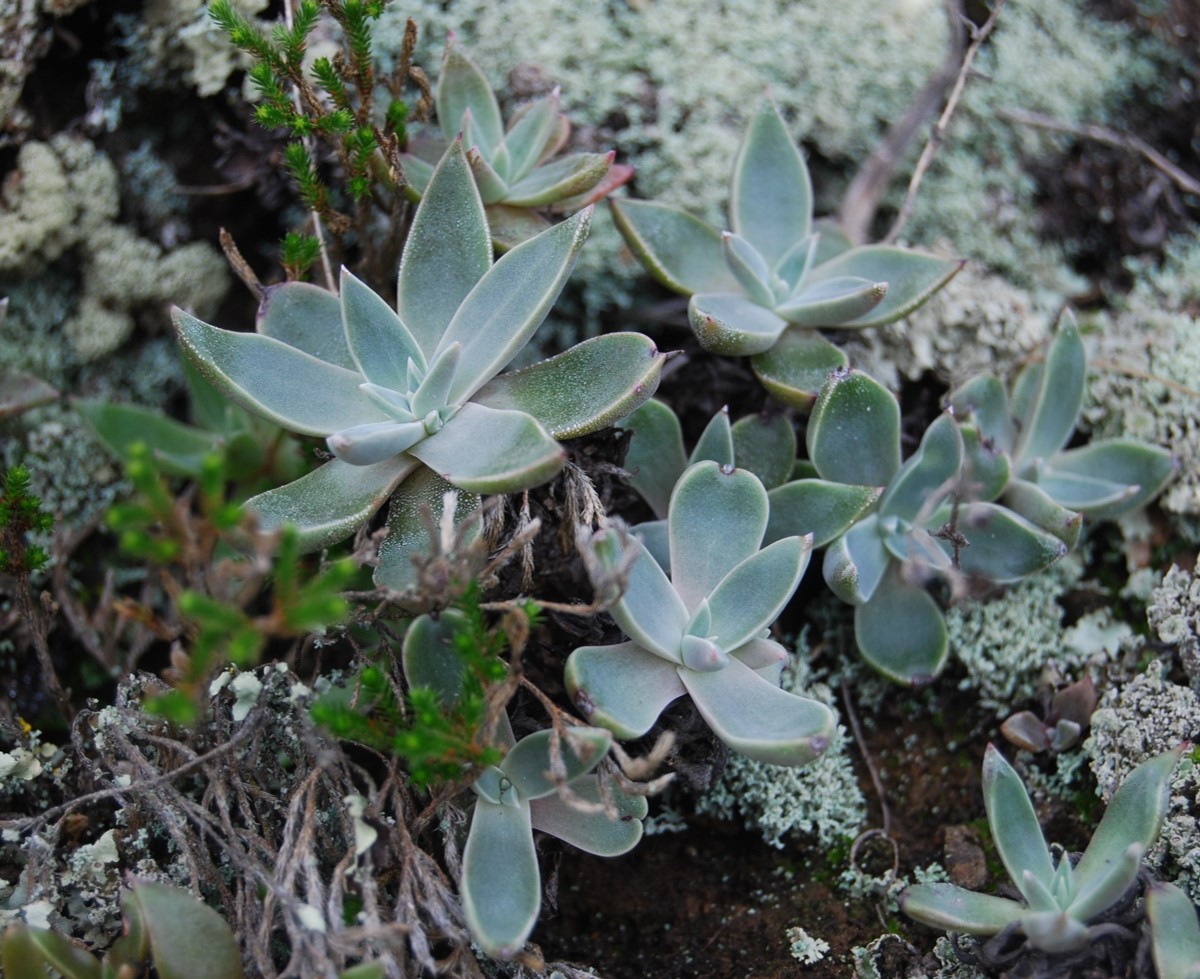 Dudleya verityi on north face of hill to south of CI campus, above Malibu Hall (29 January 2013).
Dudleya verityi on north face of hill to south of CI campus, above Malibu Hall (29 January 2013).
 Dudleya verityi on north slope of hill to south of CI campus, above Malibu Hall. Note Selaginella and Dudleya b. blochmaniae (4 March 2014).
Dudleya verityi on north slope of hill to south of CI campus, above Malibu Hall. Note Selaginella and Dudleya b. blochmaniae (4 March 2014).
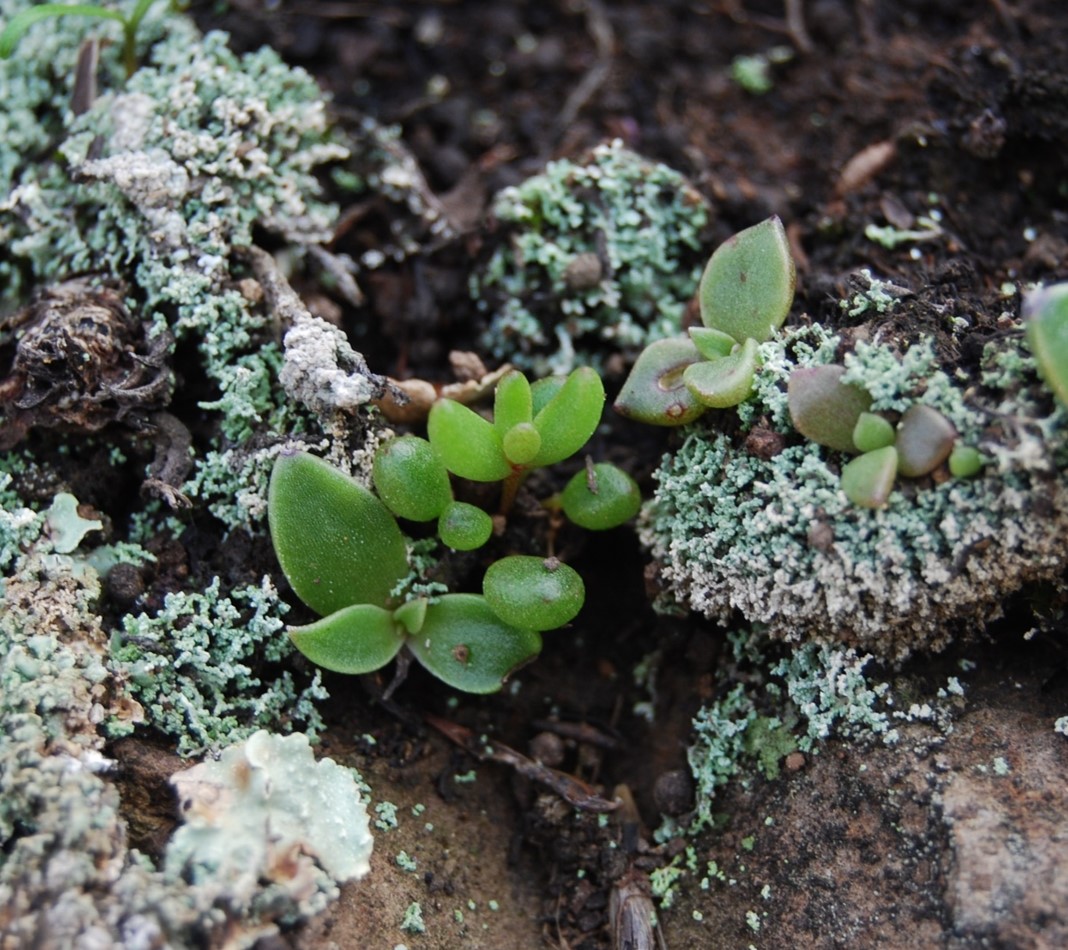 Dudleya verityi on north slope of hill to south of CI campus, above Malibu Hall. Note Dudleya b. blochmaniae and recovering lichen beds (4 March 2014).
Dudleya verityi on north slope of hill to south of CI campus, above Malibu Hall. Note Dudleya b. blochmaniae and recovering lichen beds (4 March 2014).
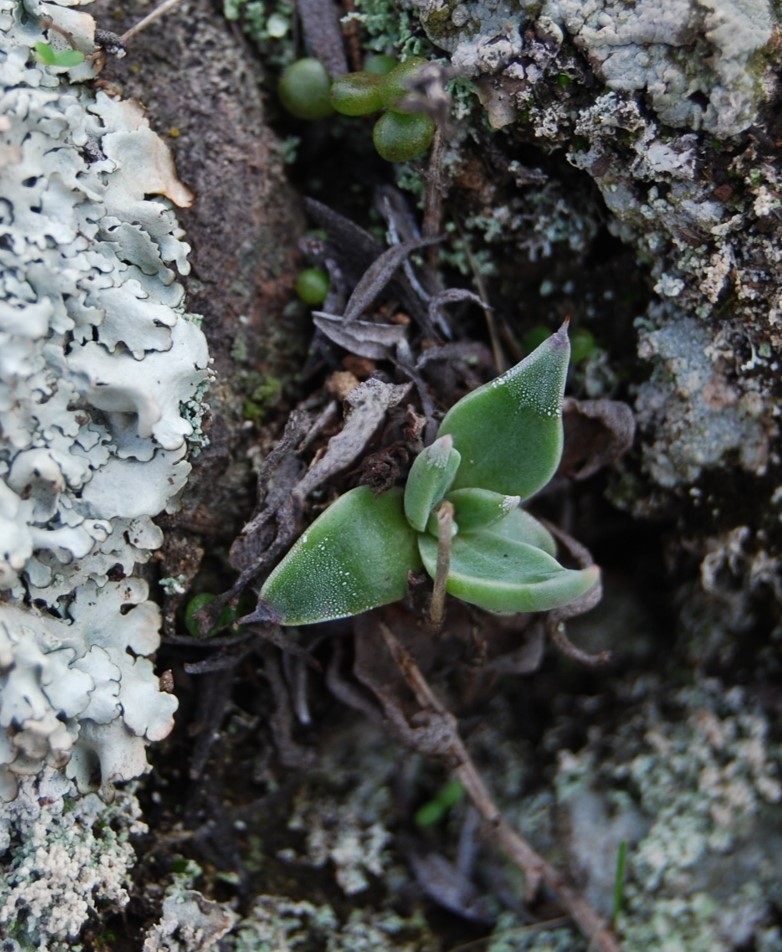 Dudleya verityi on north slope of hill to south of CI campus, above Malibu Hall (4 March 2014).
Dudleya verityi on north slope of hill to south of CI campus, above Malibu Hall (4 March 2014).
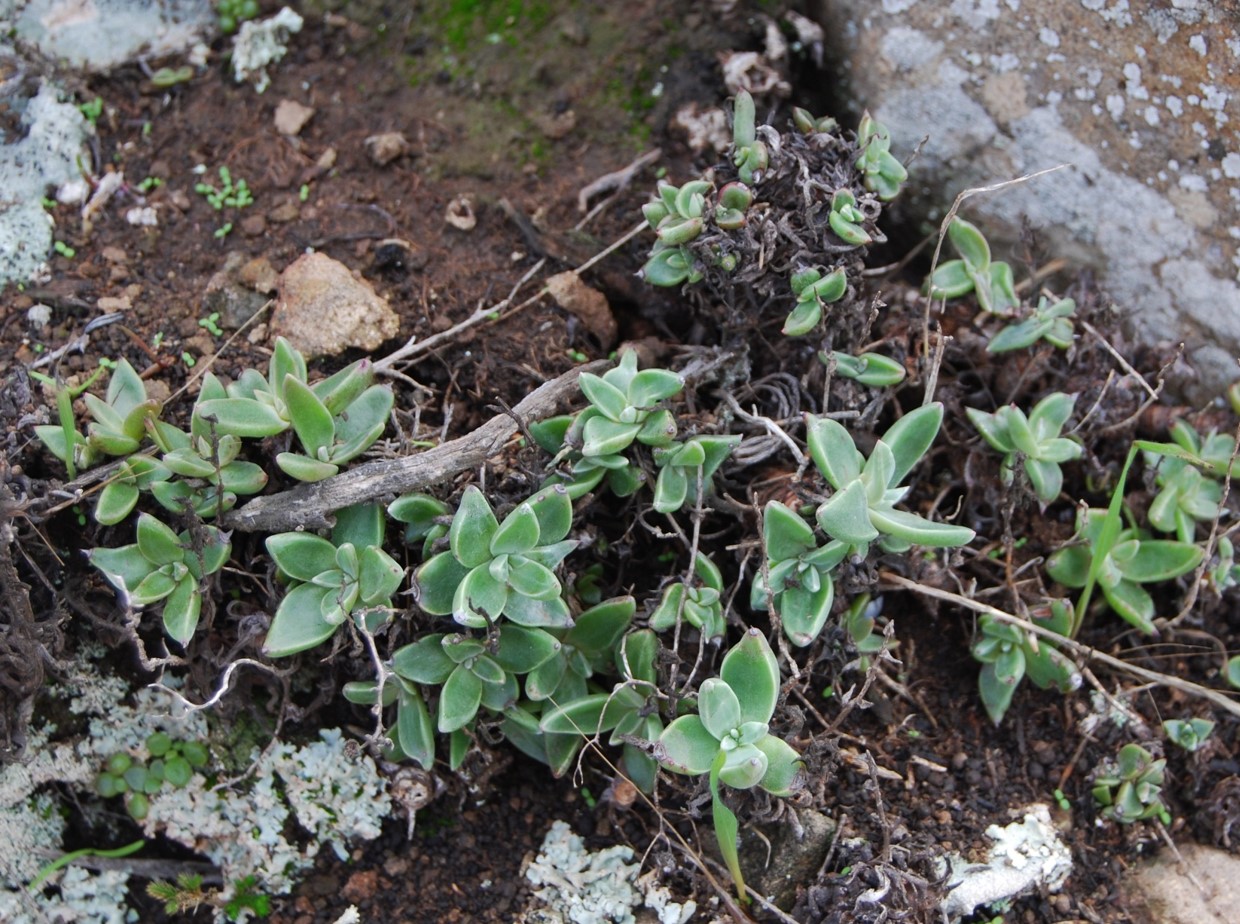 Dudleya verityi on north slope of hill to south of CI campus, above Malibu Hall. Note Dudleya b. blochmaniae and recovering lichen beds (4 March 2014).
Dudleya verityi on north slope of hill to south of CI campus, above Malibu Hall. Note Dudleya b. blochmaniae and recovering lichen beds (4 March 2014).
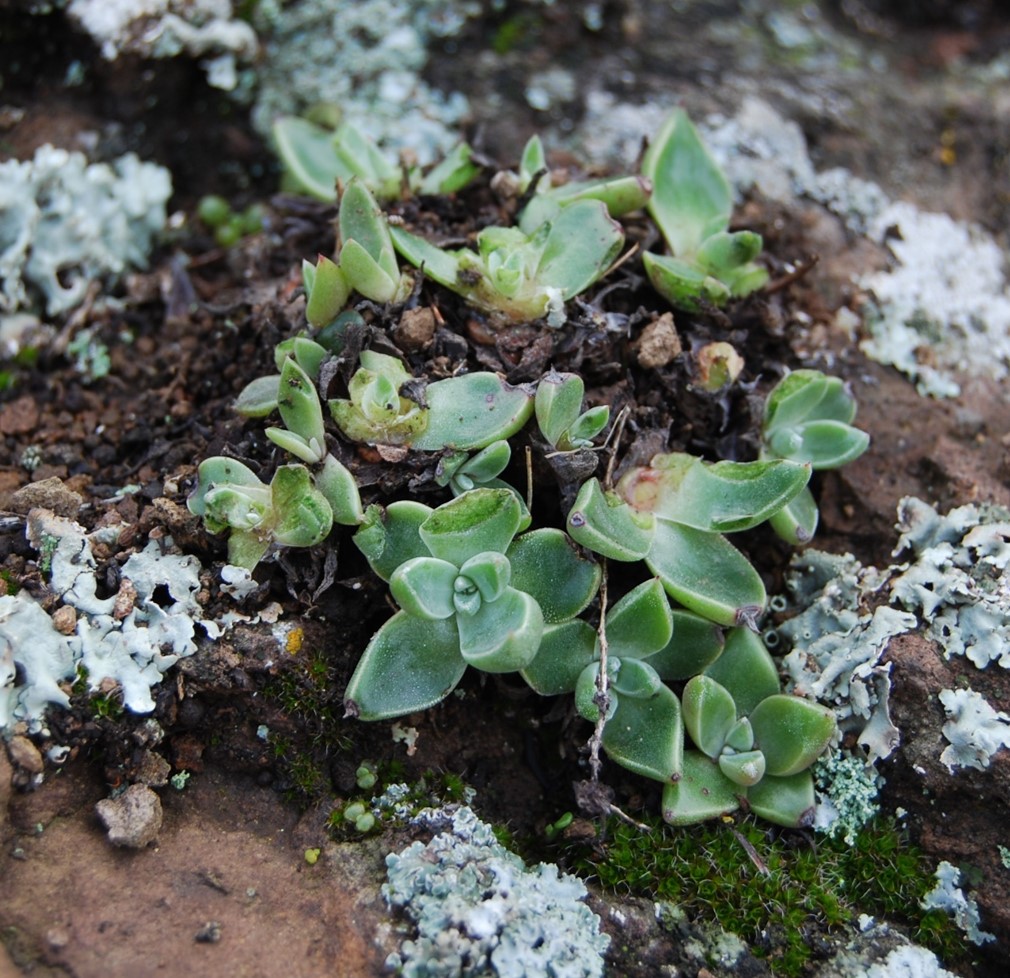 Dudleya verityi on north slope of hill to south of CI campus, above Malibu Hall (4 March 2014).
Dudleya verityi on north slope of hill to south of CI campus, above Malibu Hall (4 March 2014).
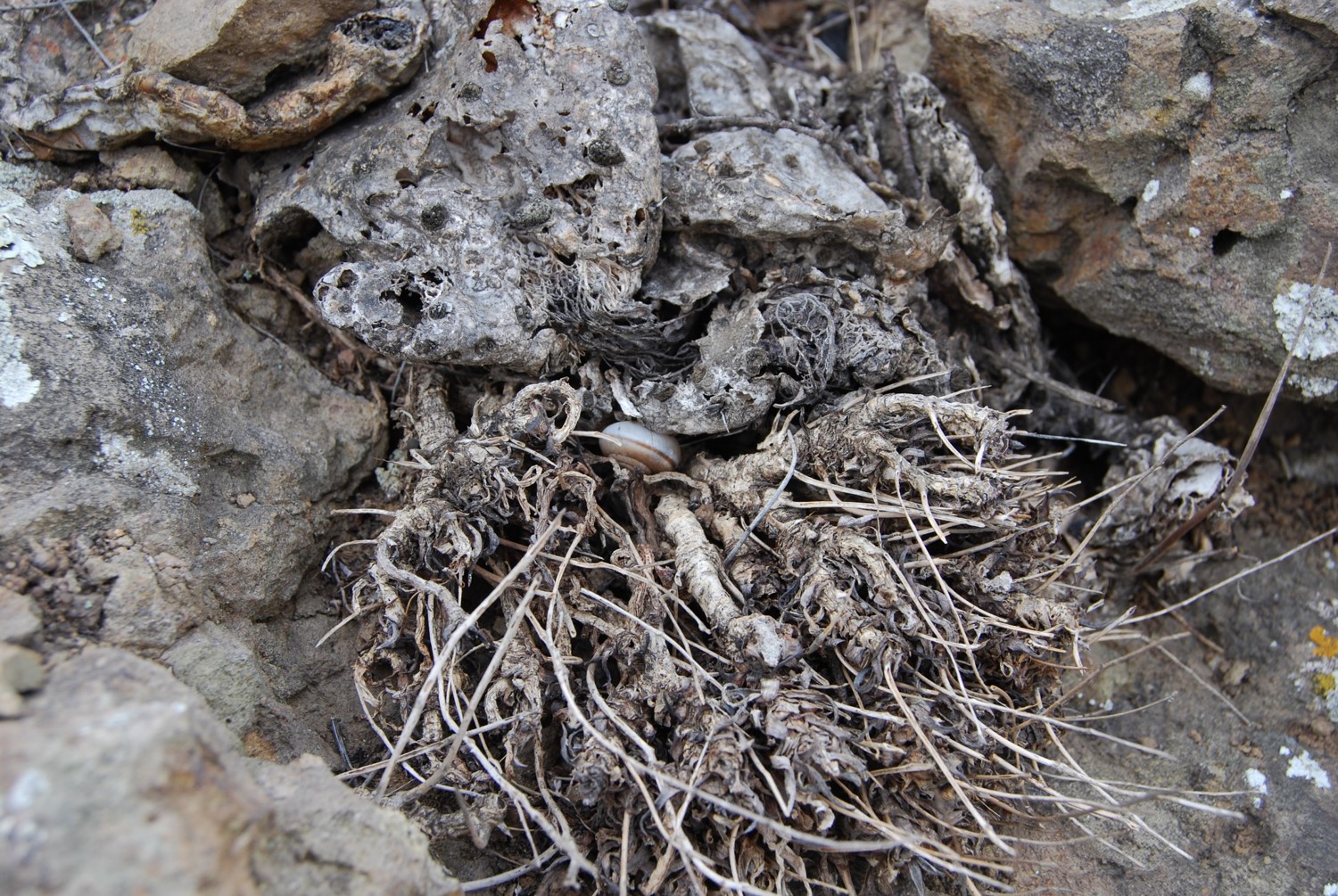 Dudleya verityi fire killed plants on north slope of hill to south of CI campus above Malibu Hall. Note the gastropod shell. The identity of this land snail has not yet been verified, but is thought to be Helminthoglypta traskii traskii (Newcomb, 1861). These shells have been encountered on most CI habitats, usually in shaded habitats such as at the base of rock faces on north facing slops - the preferred habitat of D. verityi (22 November 2013).
Dudleya verityi fire killed plants on north slope of hill to south of CI campus above Malibu Hall. Note the gastropod shell. The identity of this land snail has not yet been verified, but is thought to be Helminthoglypta traskii traskii (Newcomb, 1861). These shells have been encountered on most CI habitats, usually in shaded habitats such as at the base of rock faces on north facing slops - the preferred habitat of D. verityi (22 November 2013).
.
